Peru, Part 6: Breakdown in Andahuaylillas
— Peru, South America — 8 min read
July 14 - July 22, 2010
From Cusco, I was heading south to the canyons around Arequipa, but I had a mechanical breakdown with rear wheel bearings failing sooner than they should, but it turned out into a nice experience in the town of Andahuaylillas.
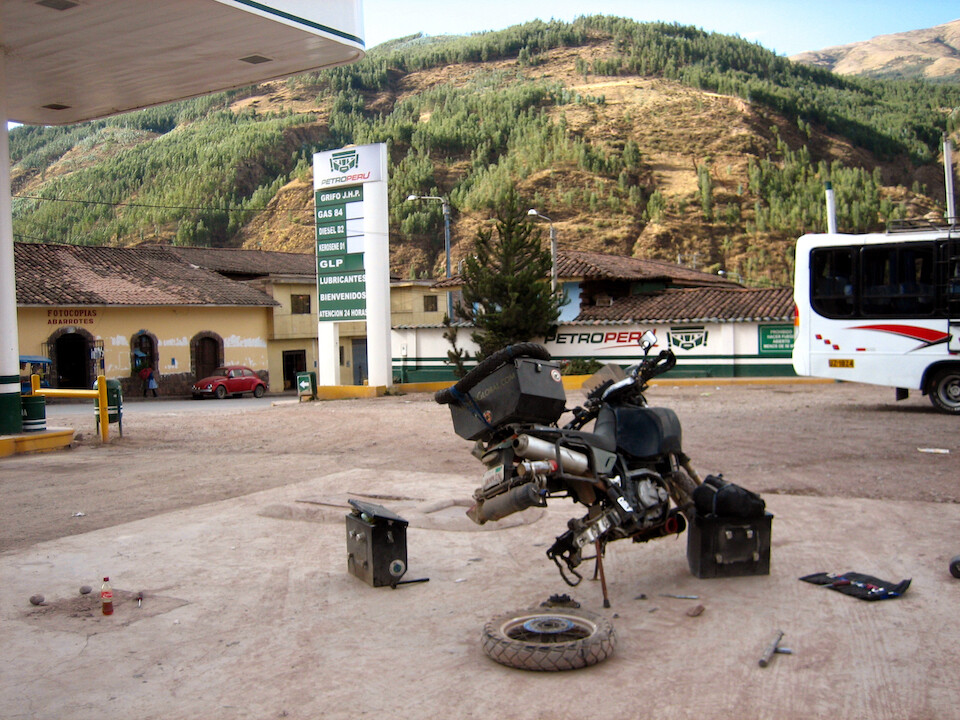
I was only about 50 kms (31 mi) south of Cusco when as I was passing through the town of Urcos, I heard a loud metal screeching noise from my rear wheel. Instead of causing more damage by riding on, I decided to take off the rear wheel at a gas station and...
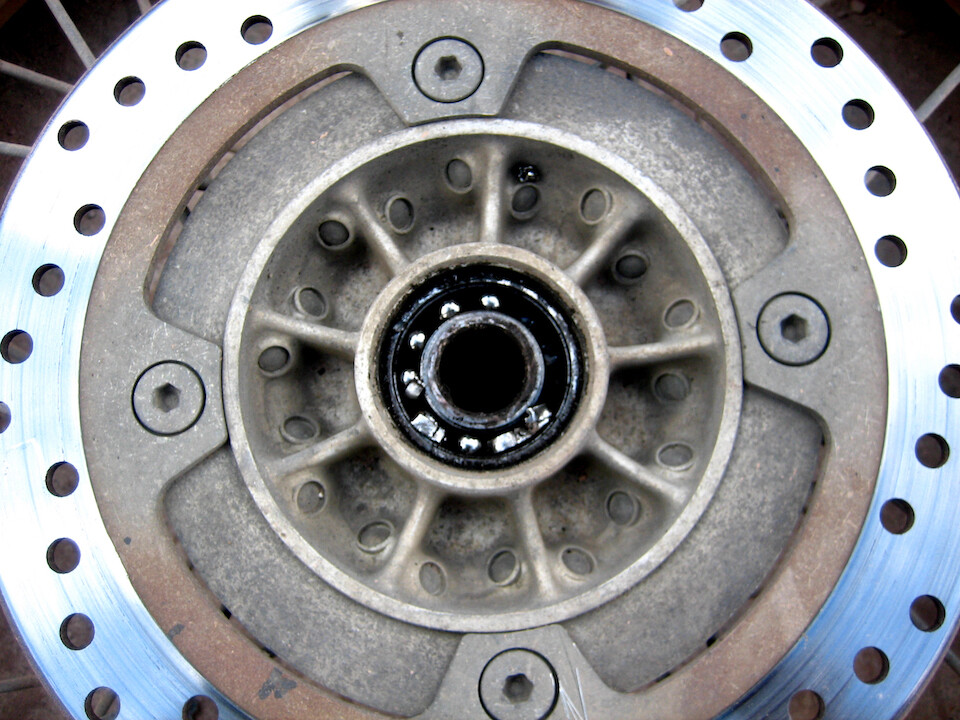
...discovered that the rear wheel bearings had failed. Hmmpf. I felt I was being proactive before the trip by replacing all the bearings with new ones from All Balls. These failed only after 24,000 kms (15,100 miles). Yes, they've probably suffered a lot with the weight and the rough roads, but I expected them to last much longer. And therefore, was not carrying any spares.
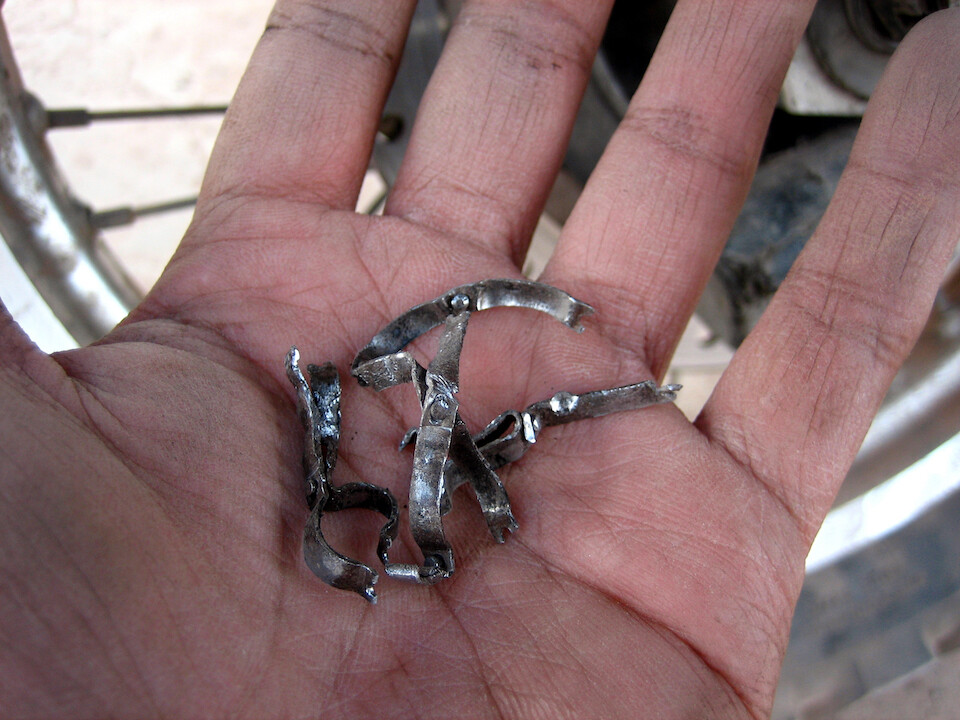
The mangled braces that are meant to the keep the ball bearings in their race. I asked around town and the nearest place to buy bearings would be in Cusco. I tried hailing down a few trucks to give me a ride.
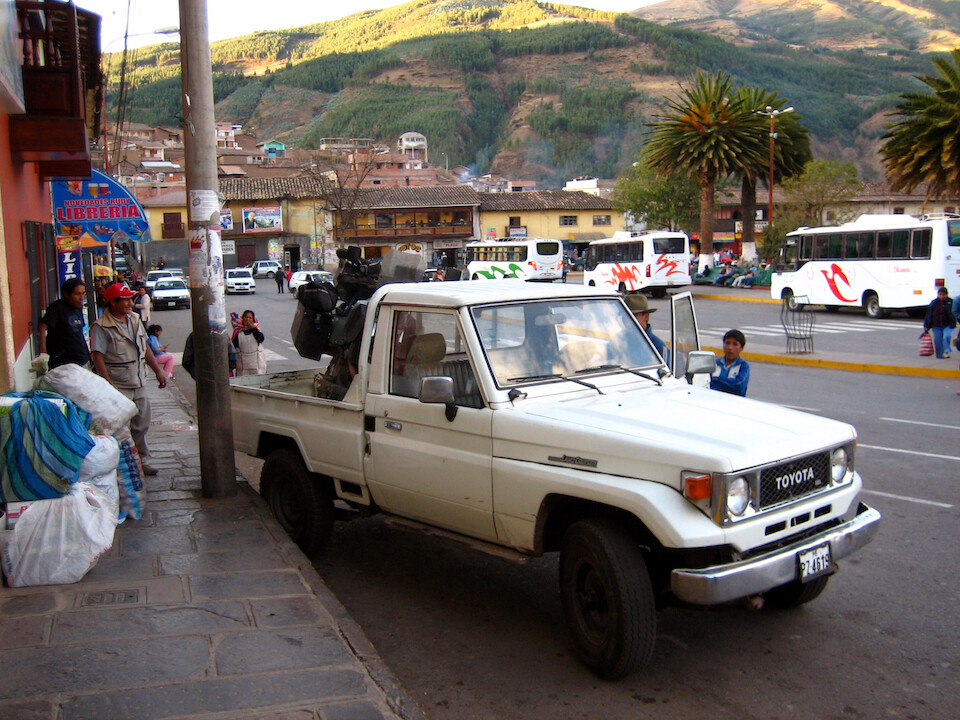
Just as it was getting dark, Helmut here came through on his Toyota Landcruiser pickup truck. After explaining to him my situation, he said I could stay the night at his house and tomorrow, he'd take me to Cusco. Even if a situation looks tough, it's only a matter of time before something good happens.
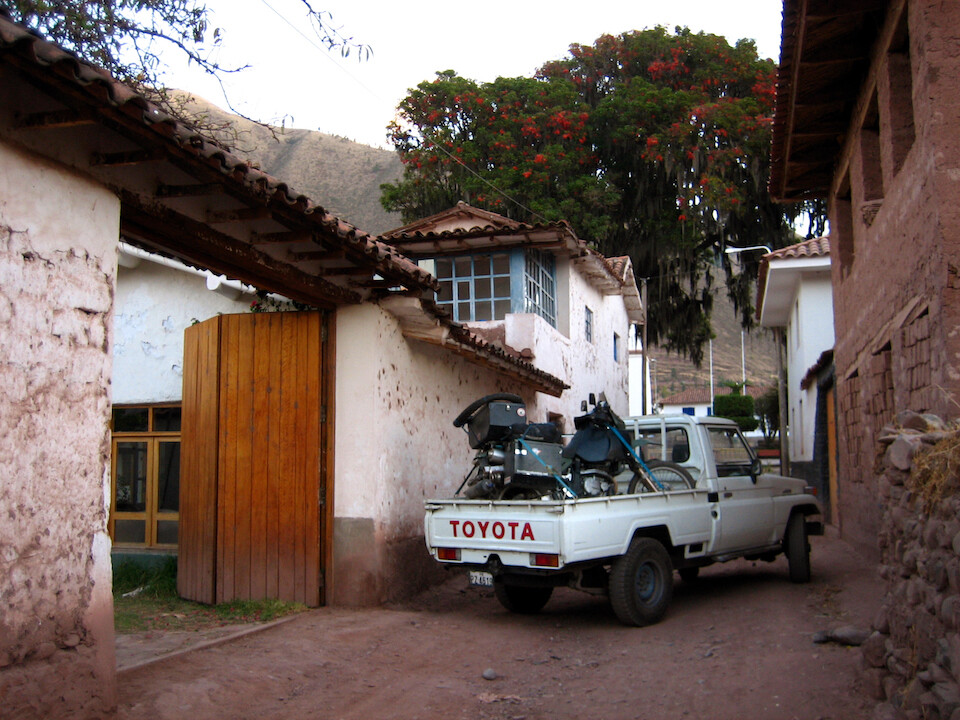
Helmut lives in the nearby town of Andahuaylillas. It's a sleepy little town and his house is right by the town square.
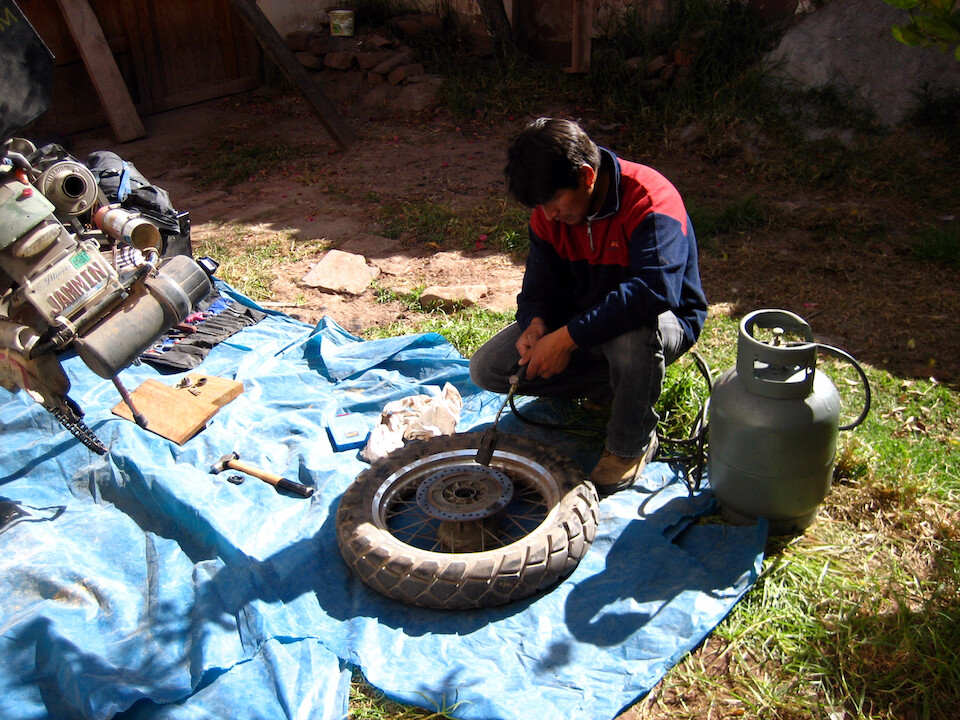
The next morning, one of Helmut's workers, Henry, helped me remove the old bearings. I decided to change out all the rear wheel bearings (3), just in case. Because if one failed, the others might not be far behind, experiencing the same forces.
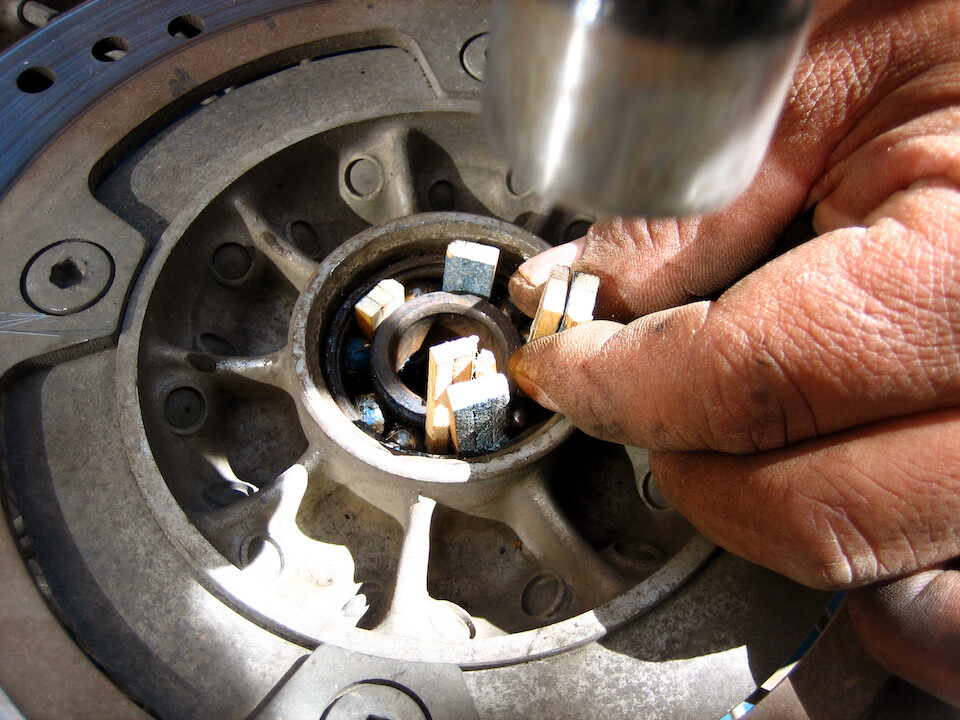
Since some of the ball bearings had already fallen out, in order to remove the bearing, he used this simple trick of hammering in wood pegs to keep the remaining balls spread around the bearing. Worked like a charm.
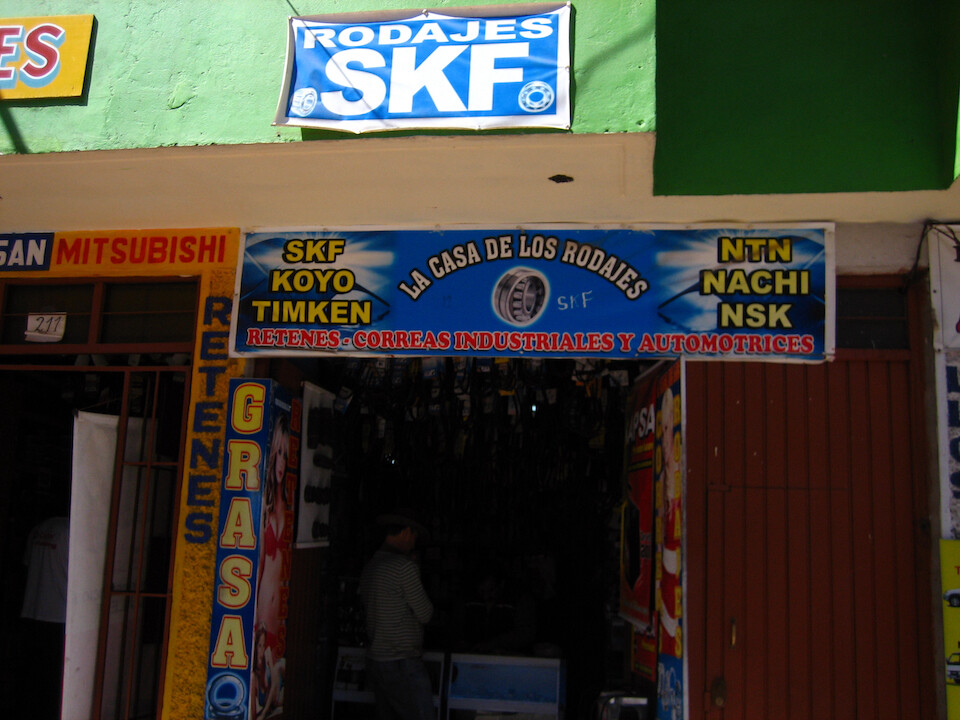
Heading straight to the Casa de los Rodajes (House of Bearings) in Cusco, where I got a set of SKF bearings, a well-known industrial supplier. I also got a spare set of all wheel bearings.
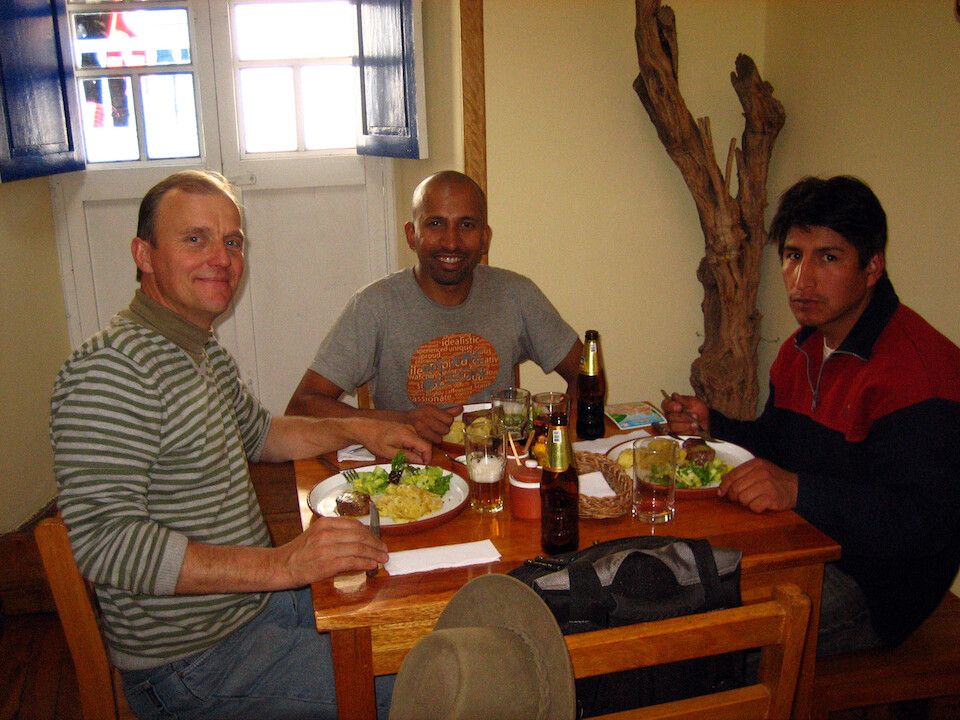
Having lunch with Helmut and Henry in the San Blas barrio of Cusco. Helmut is from Germany and came here around 25 years ago to monitor an aid project with communities in the jungle and decided to stay. He's a carpenter and runs a small business doing jobs for the hotels around the area and restaurants, such as the one we're at now, Granja Heidi, an Alpine cafe. Helmut and his team made all the furniture.
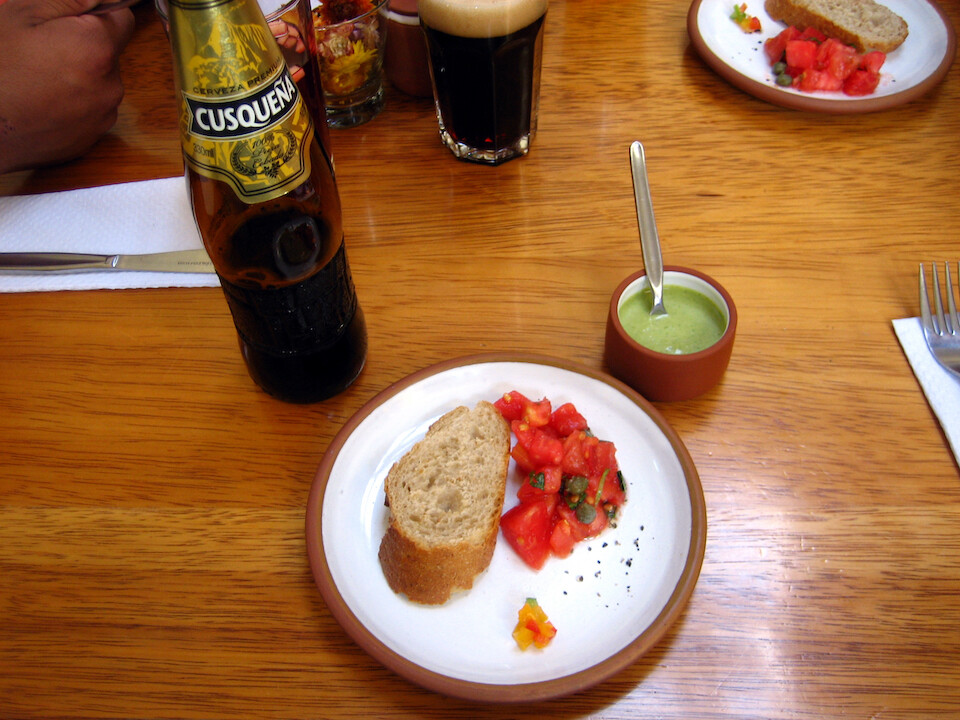
Starting the meal with some bruschetta and Cusquena beer, a tasty, malty dark beer.
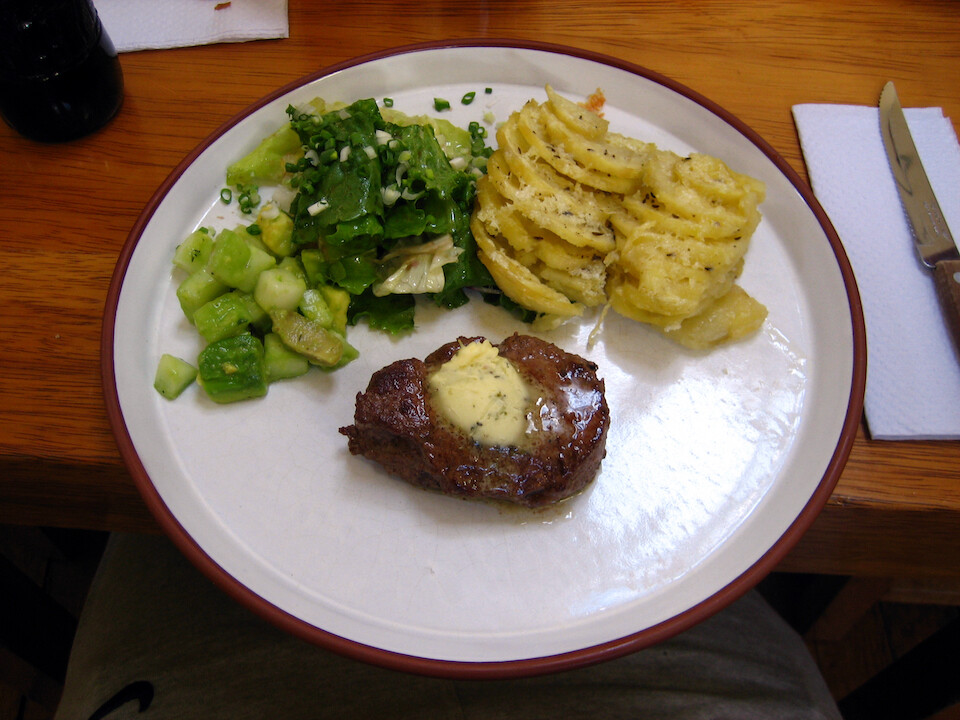
Meal of the day of grilled steak with cheesy potatoes and some stir-fried veggies. The plate is huge, making the food look small.
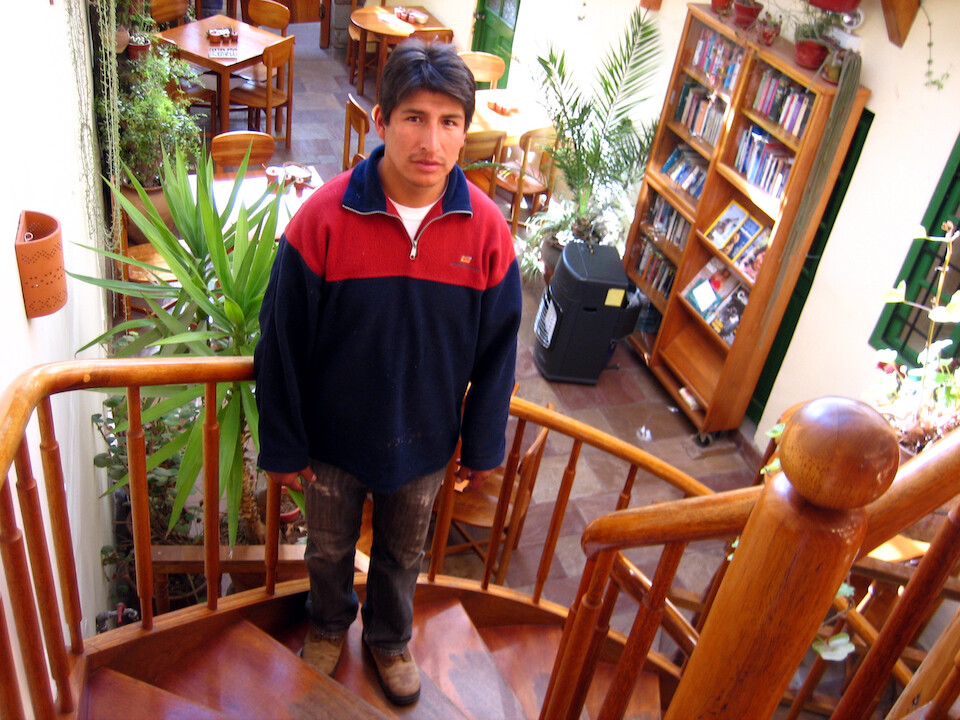
Henry standing on the circular steps that he made 10 years ago.
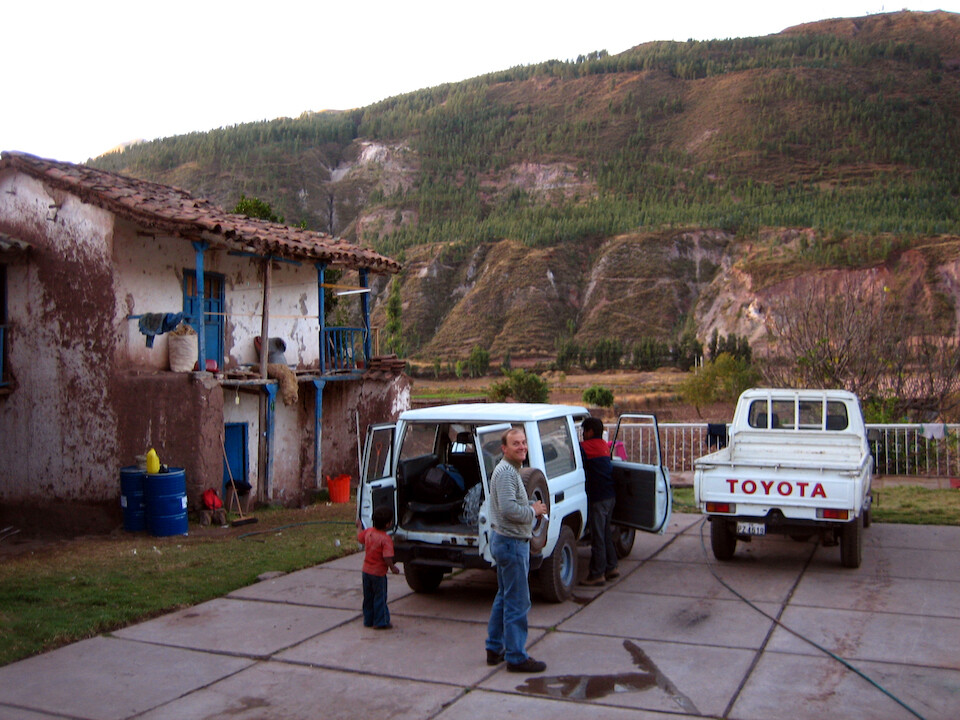
Exchanging jeeps at Helmut's second house in nearby Huari. He bought this 300 year old house that came with some farming land and he's started growing his own crops. The area is also used to store wood for his upcoming projects. He helps out some rural communities with his work and actively seeks to employ them to get some prosperity flowing into their towns. He also heads off into jungle to work on development projects from time to time.
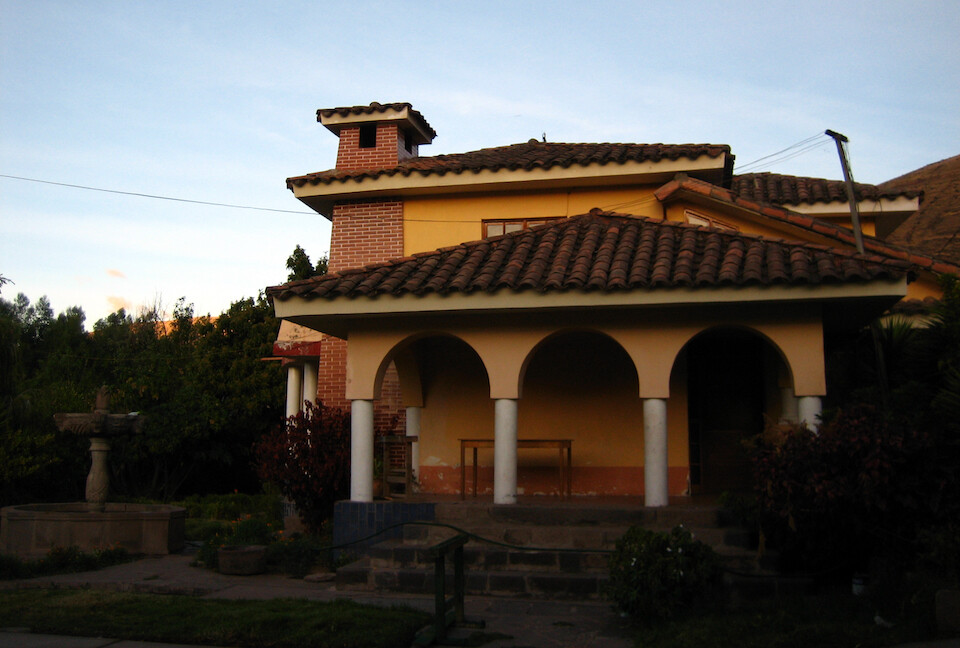
A more modern house at his second property.
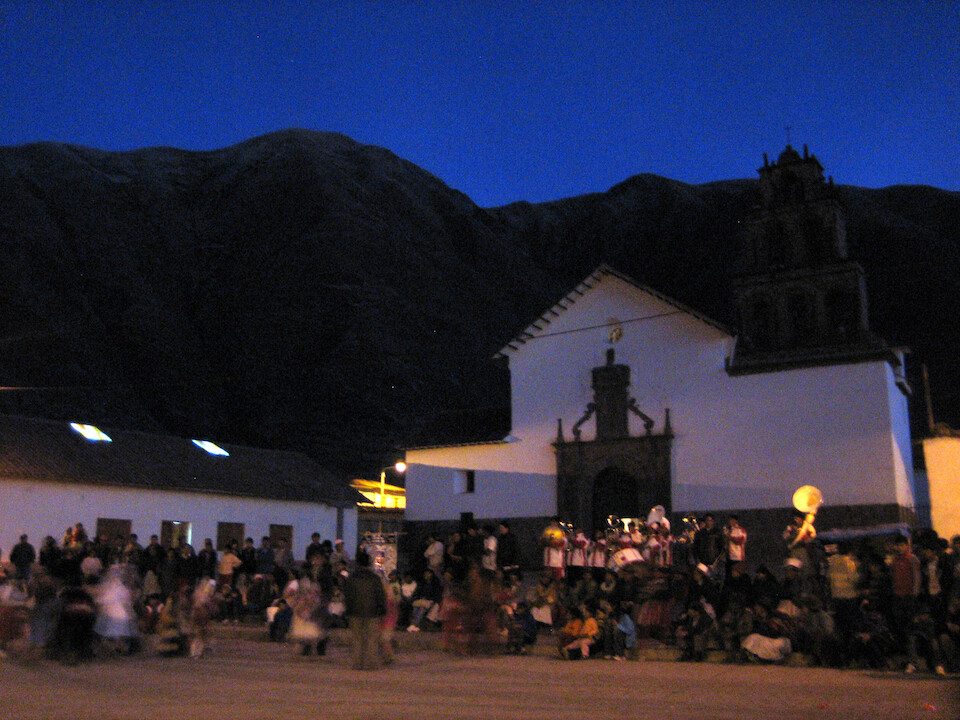
We were walking around the town of Huari and came across this celebration in front of the church.
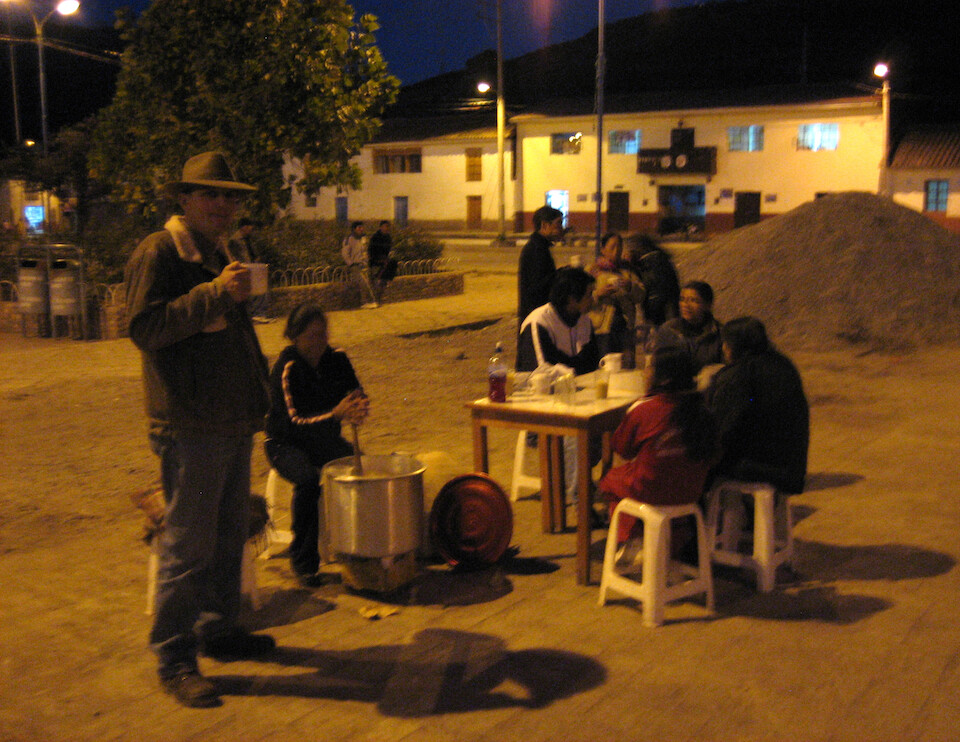
Having a hot corn-based drink with some alcohol, which went well with the chilly evening.
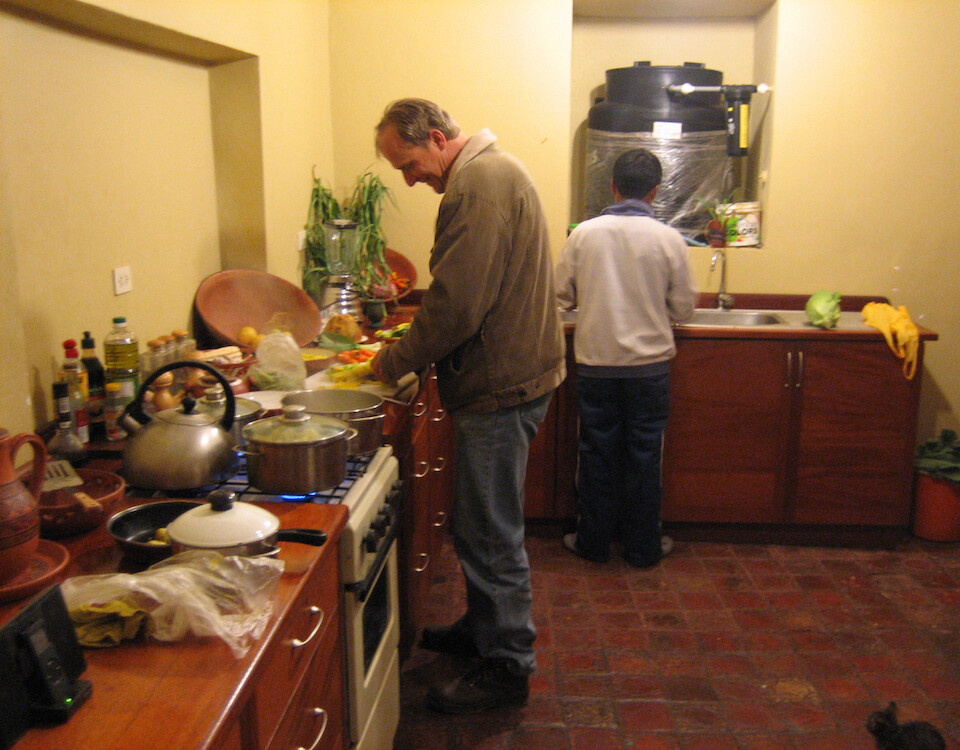
Helmut likes to cook and has a very inviting kitchen. You can see why I enjoyed my stay here. The boy at the sink is Julio, a kid from a rural community who stays with Helmut for free as long as he attends school and helps out around the house.
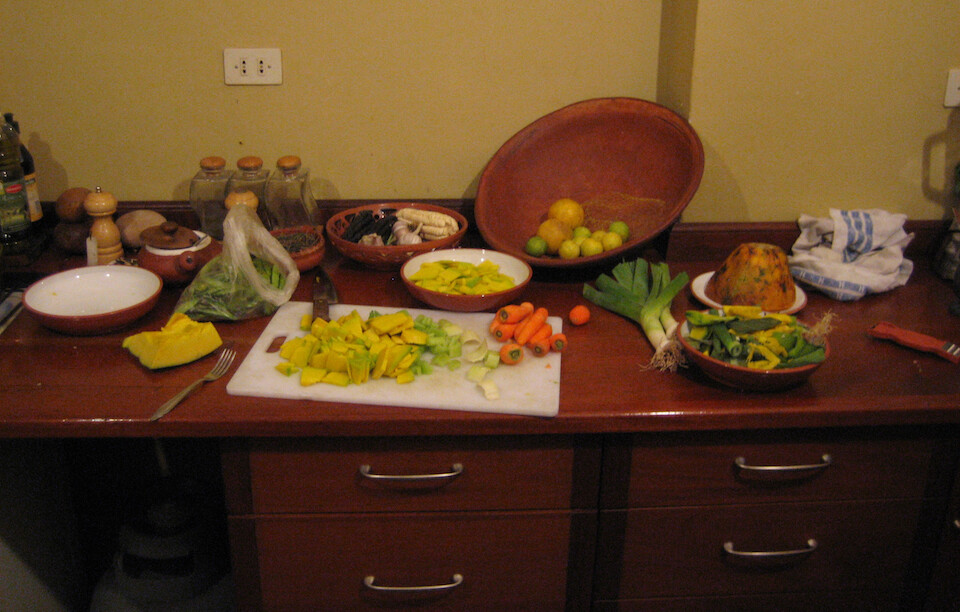
Cutting lots of vegetables for a tasty soup.
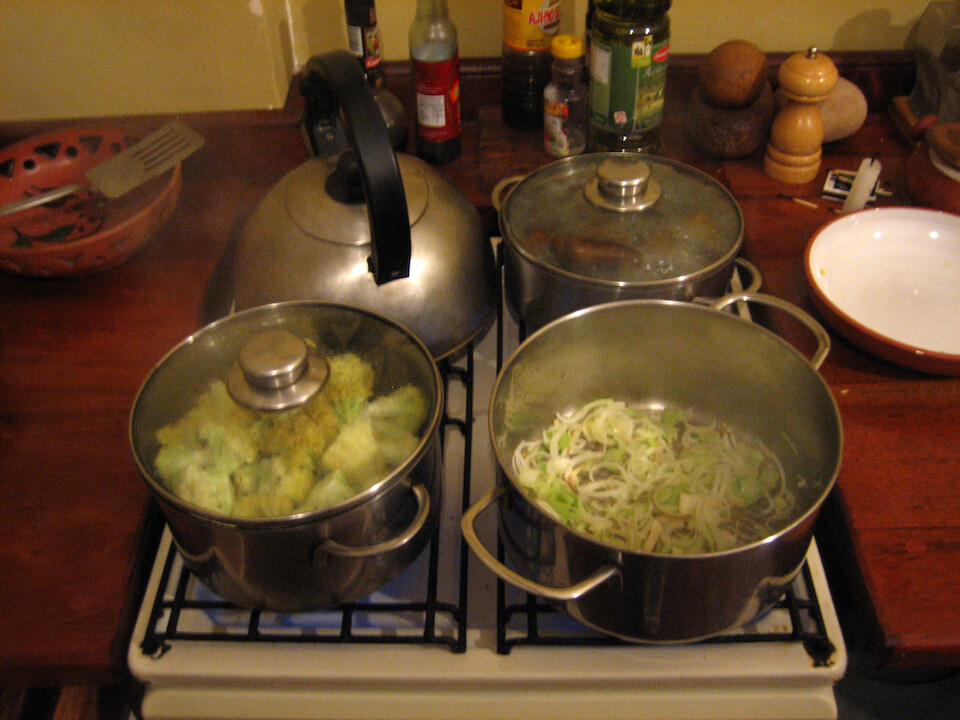
All four burners going, heating water, cauliflower, beet roots and onions. Timely preparation of the soup, because I fell sick the next day. I think it was because I ate some stale potatoes and could only manage to keep soup down until the fever broke the next day.
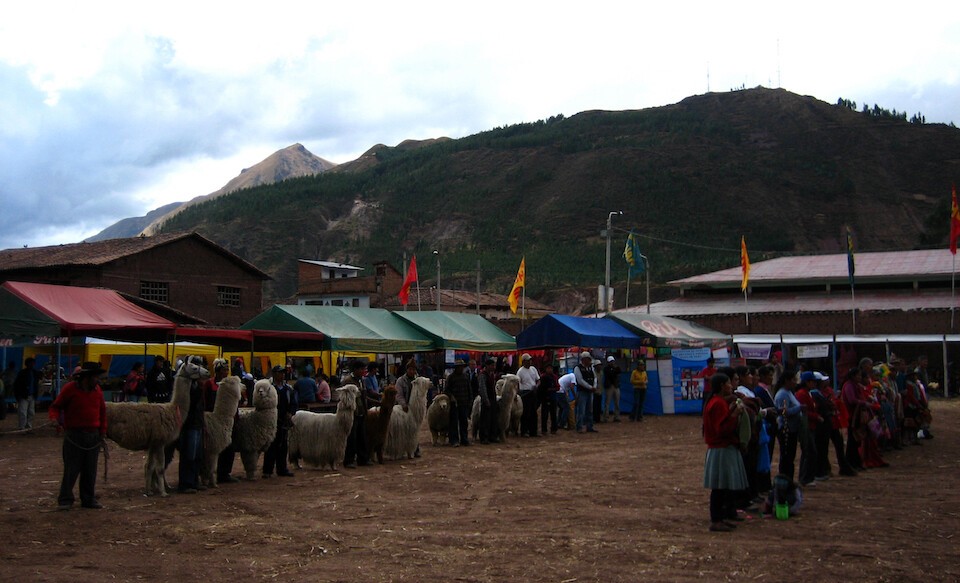
Checking out the local annual fair at Huari of the Virgen del Carmen Expo Feria.
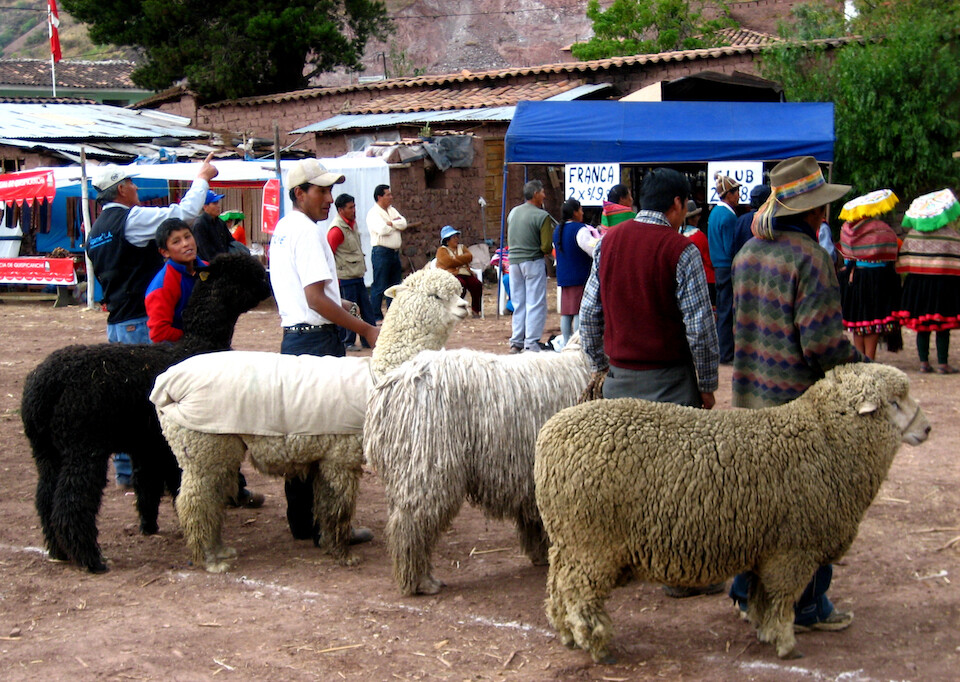
All the Andean domestic animals were on display.
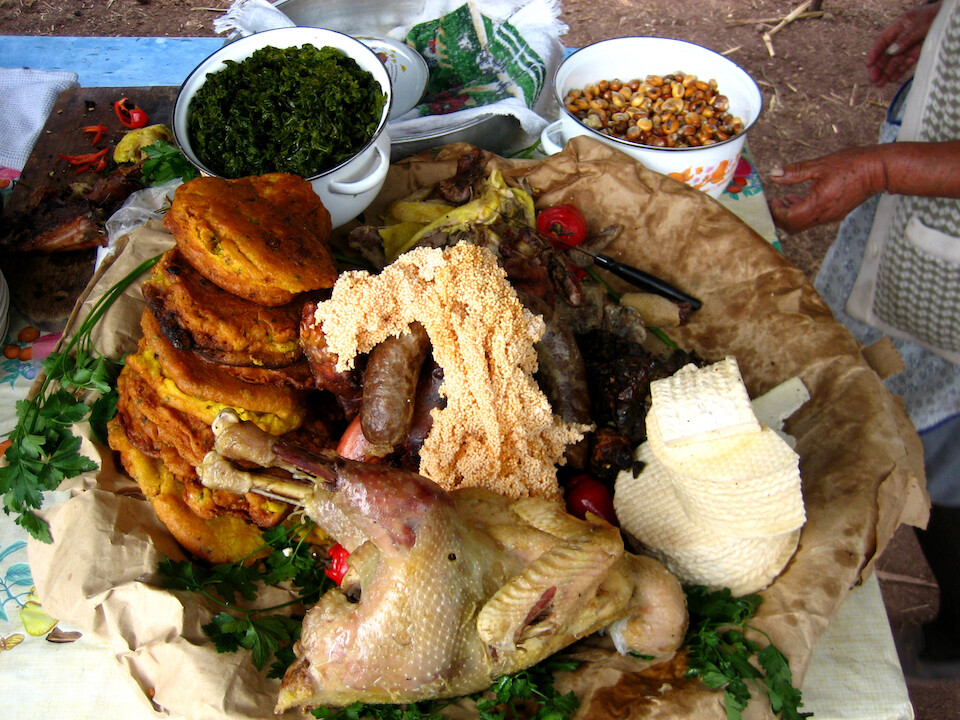
But first, some grub. Everything was deep-fried, from the chicken to the sausage and the bread. The white on the right is cheese and the yellow in the middle is roe, fish eggs. Buried underneath is all kinds of internal organs, all deep-fried.
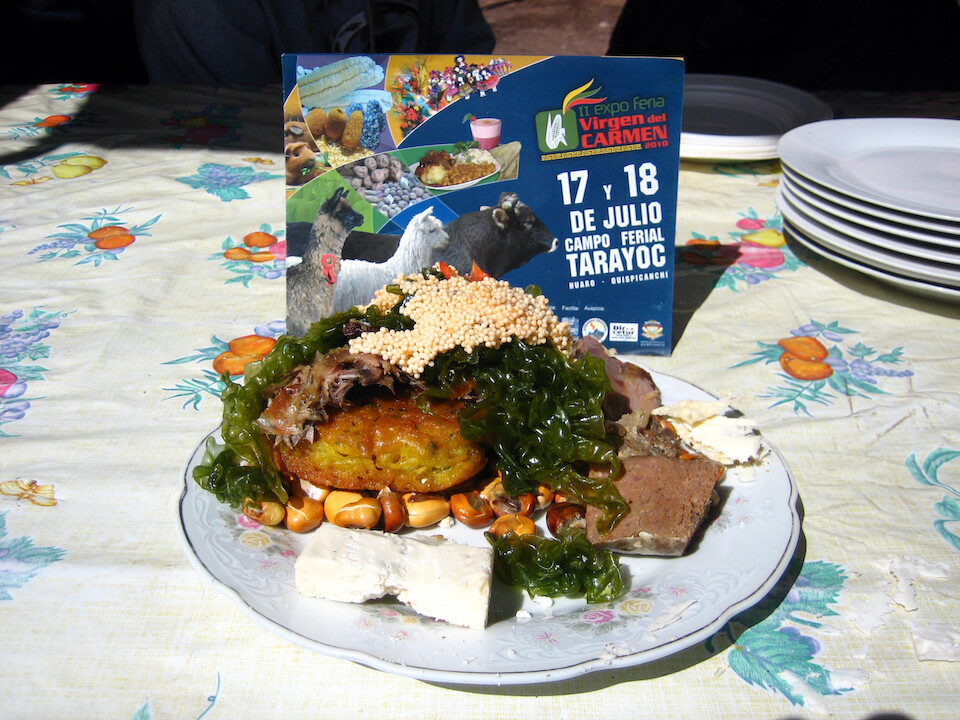
Looks better on a plate. The dish is topped with sea-weed. I'm surprised it's part of the local diet at 3,050 m (10,000 ft).
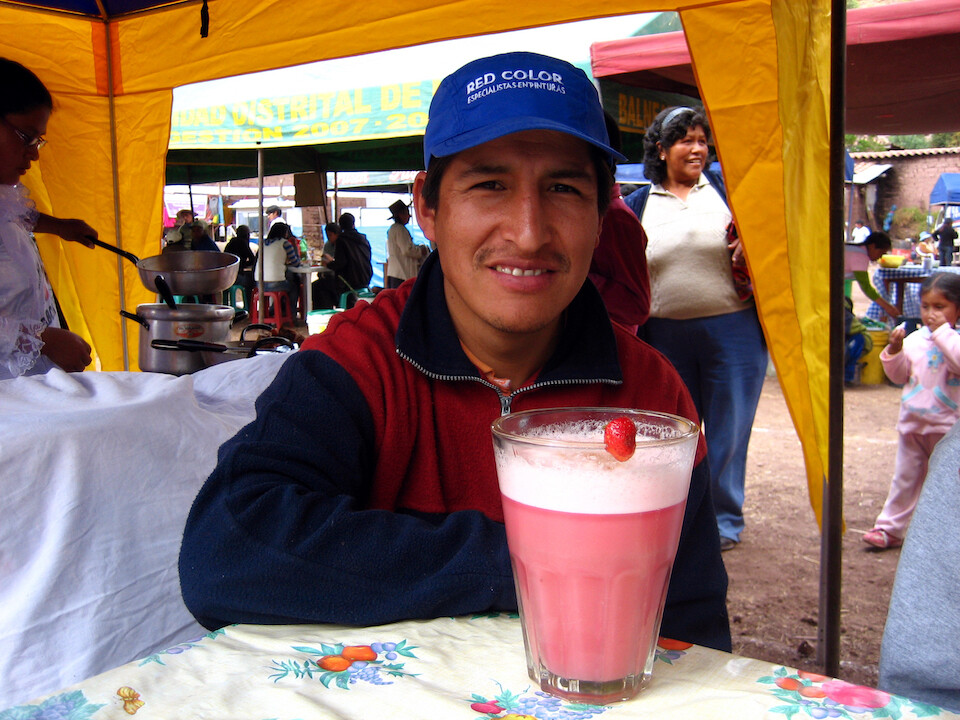
Henry having a man-sized glass of Chicha, the local alcoholic beverage made from fermenting dark corn. It's not that strong at around 2% alcohol, so that's why you're served a large quantity of it.
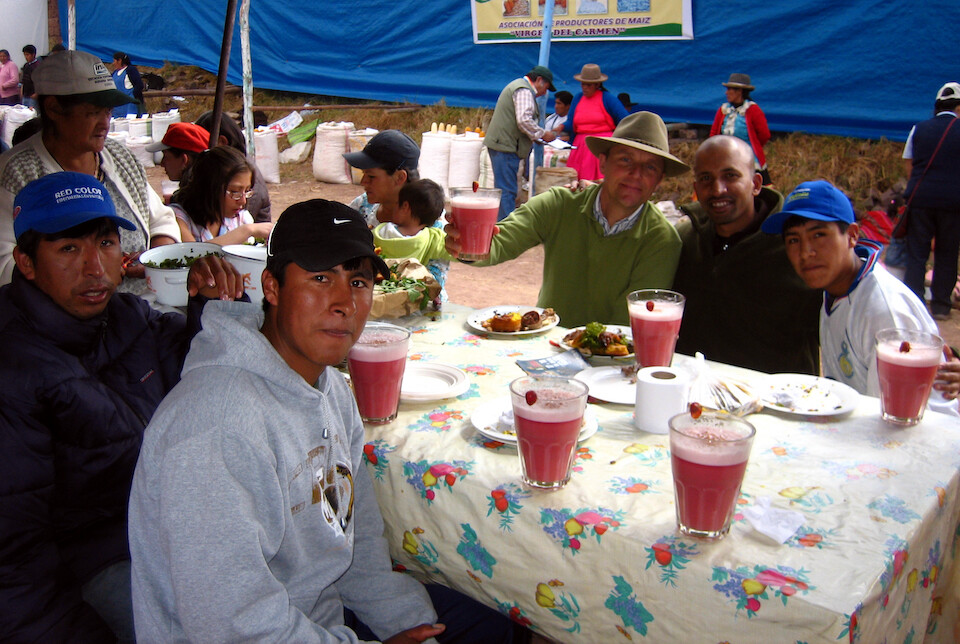
Helmut and all his workers enjoying a day at the fair.
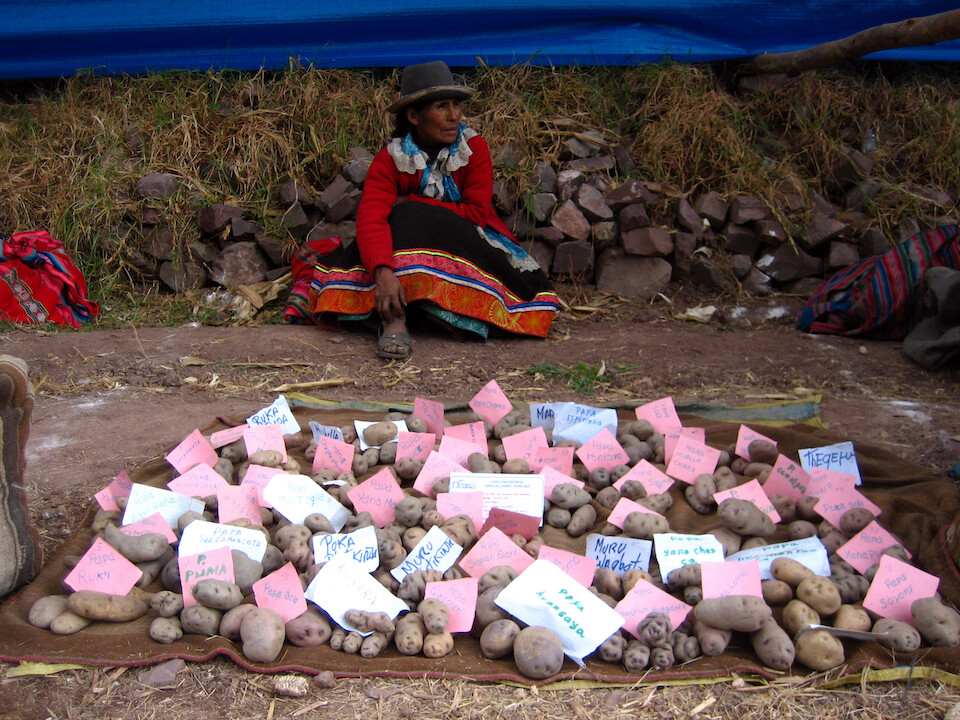
On the agricultural side of the fair; I guess there was a contest to see who could bring in the most varied types of potatoes. Each one is a different kind. Very fitting since the potato was first domesticated in southern Peru around 3000 BC and was the staple food of most civilizations here and only brought to Europe when the Spanish arrived in the 16th century.
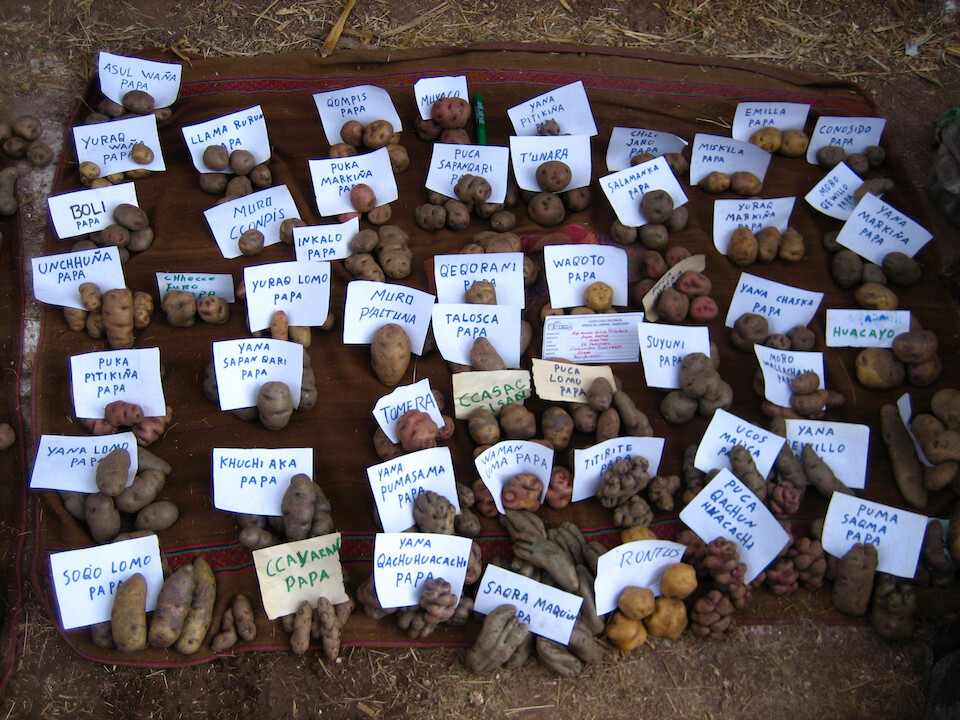
They aren't kidding when they say there are over 4,000 kinds of potatoes grown in the Andes. Seeing nature's vast biodiversity within a single species first stand sure makes me question the limited choice that we're presented with in the supermarkets of the world.
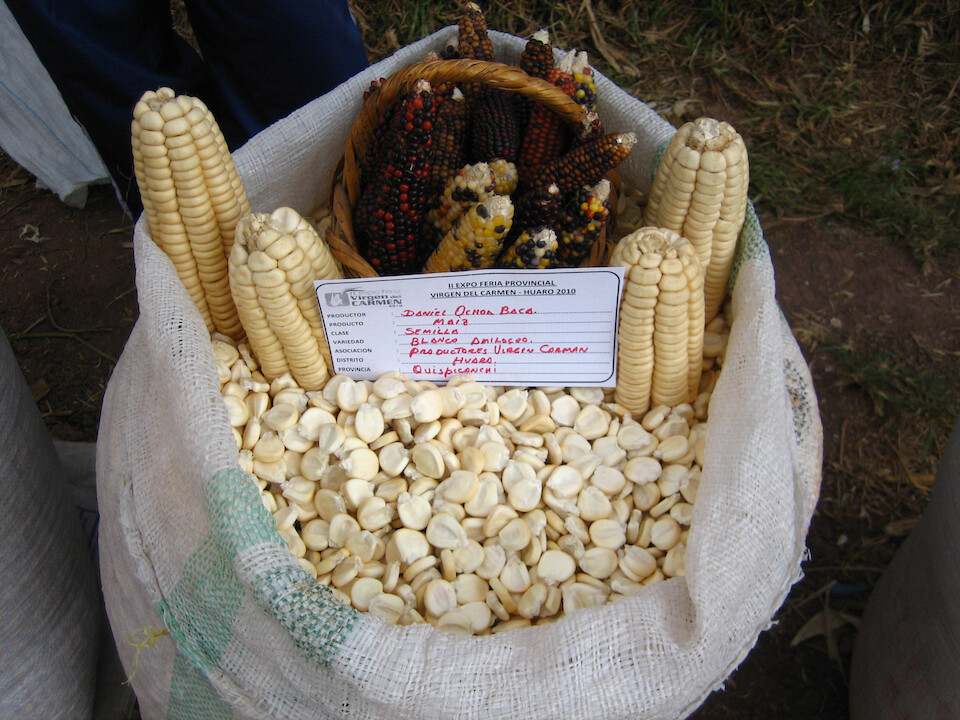
Besides potatoes, corn or maize is also important to the diet here. Farmers showing off their different varieties of maize.
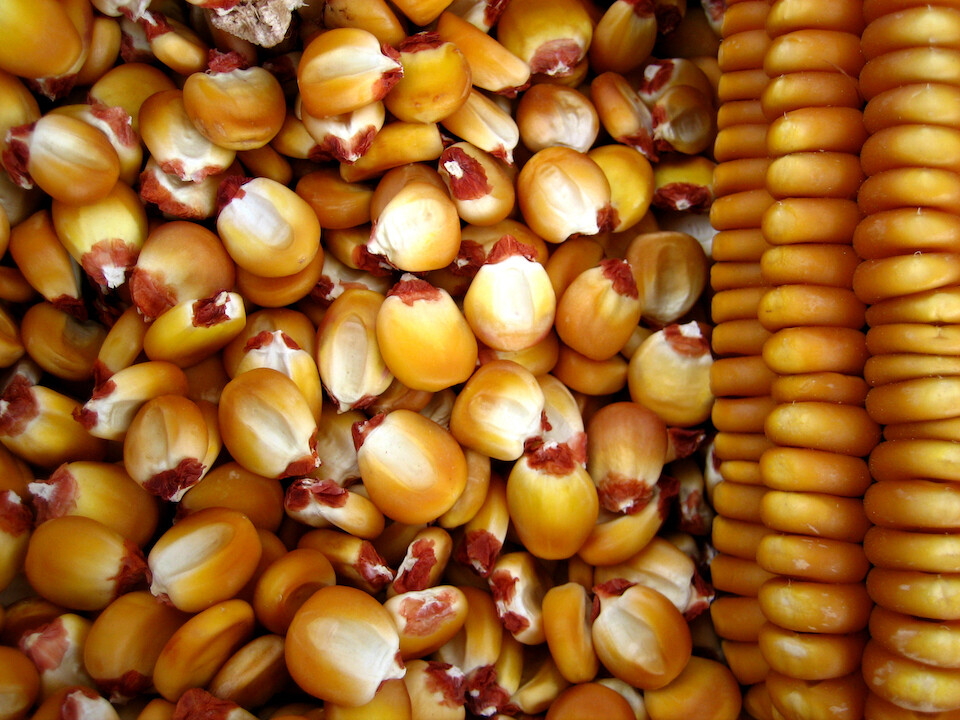
Golden, round maize.
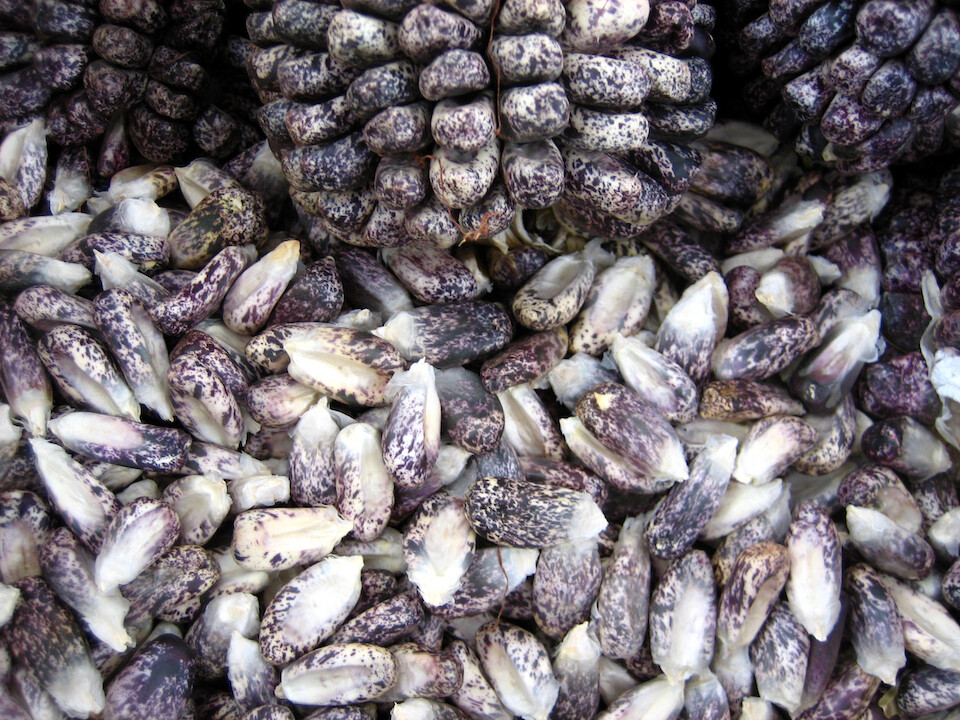
Black, spiky maize.
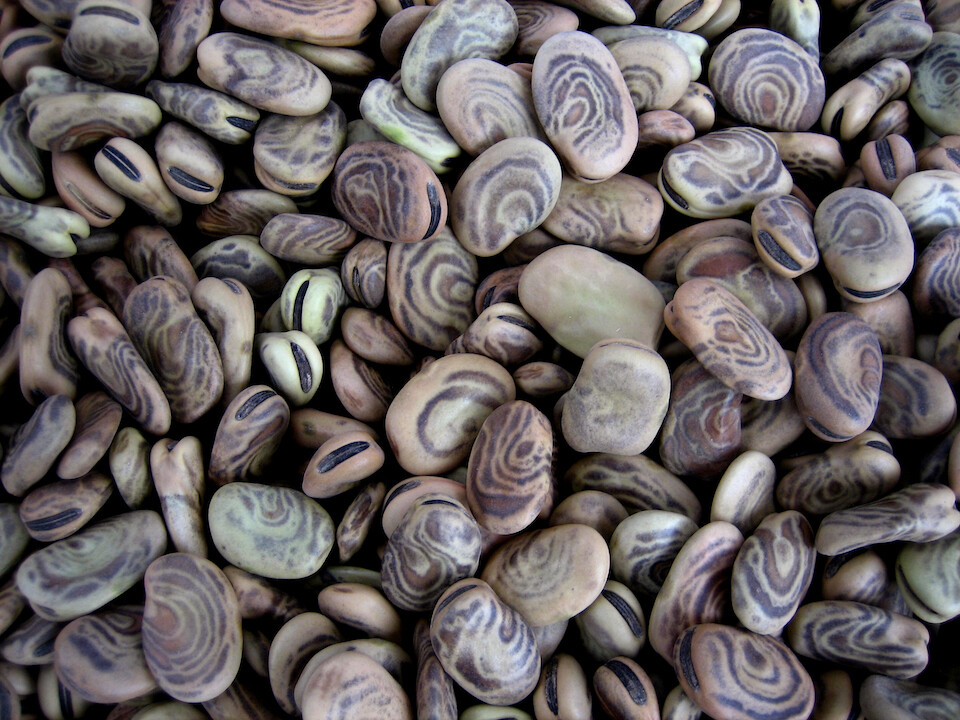
Psychedelic beans.
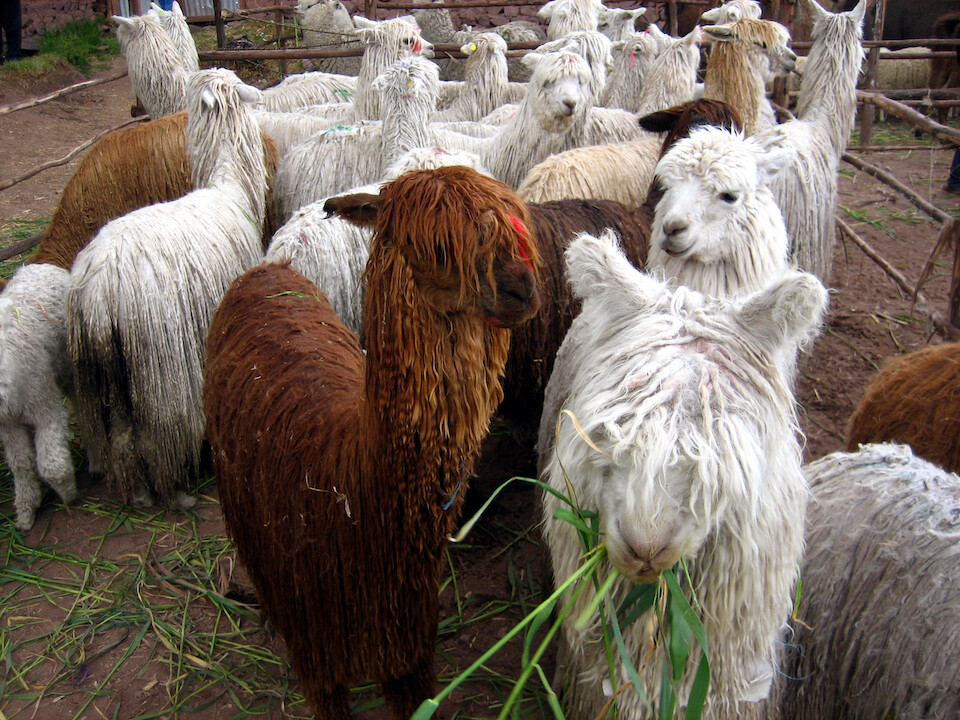
Alpacas, a relative of the llama and this variety with the cool dreads is called Suri.
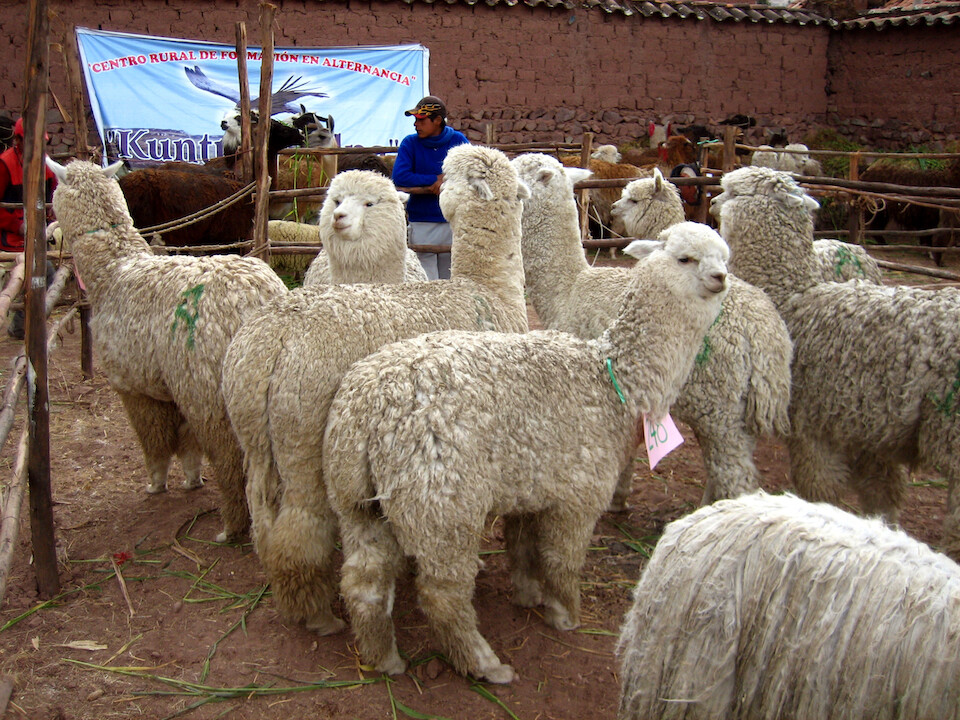
The regular variety of Alpacas growing a different kind of wool.
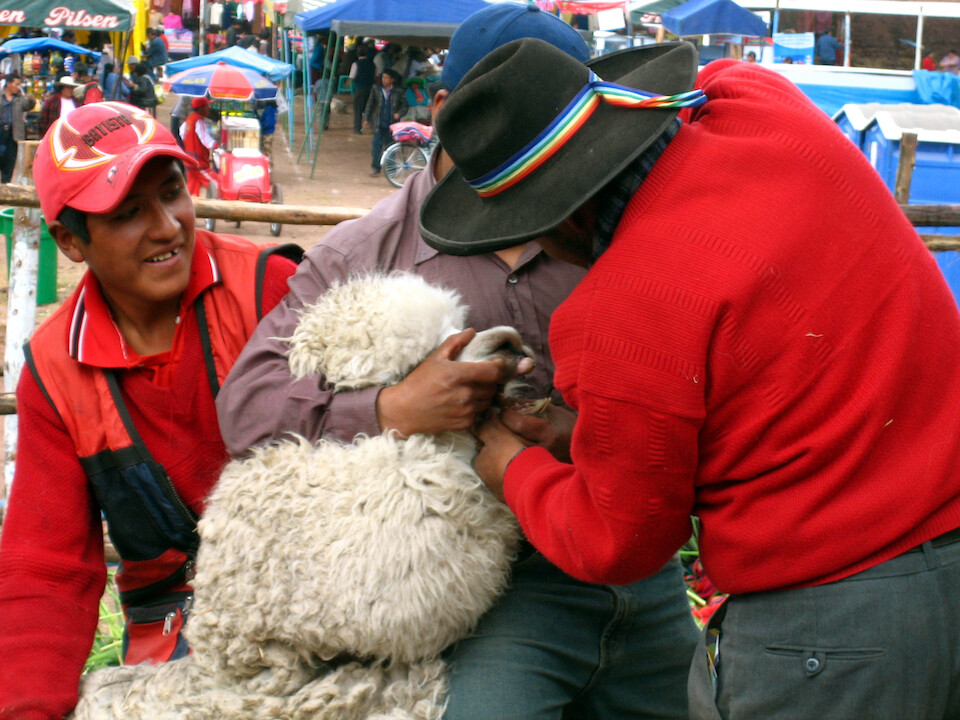
Universal displeasure from visiting a dentist. Getting the teeth in shape before the beauty pageant.
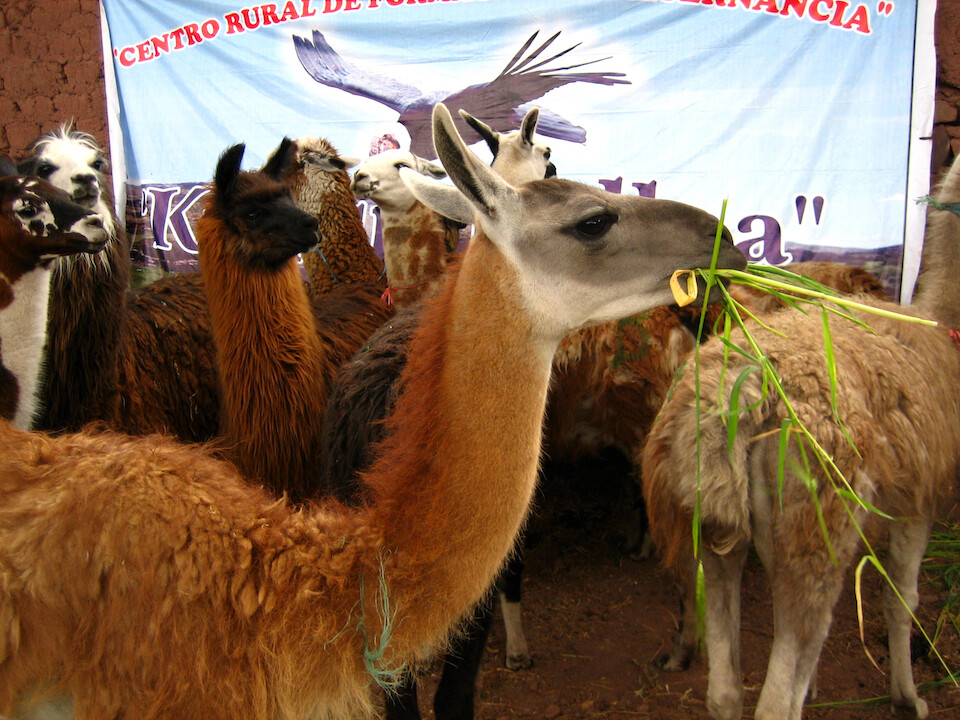
Different kinds of Vicunas.
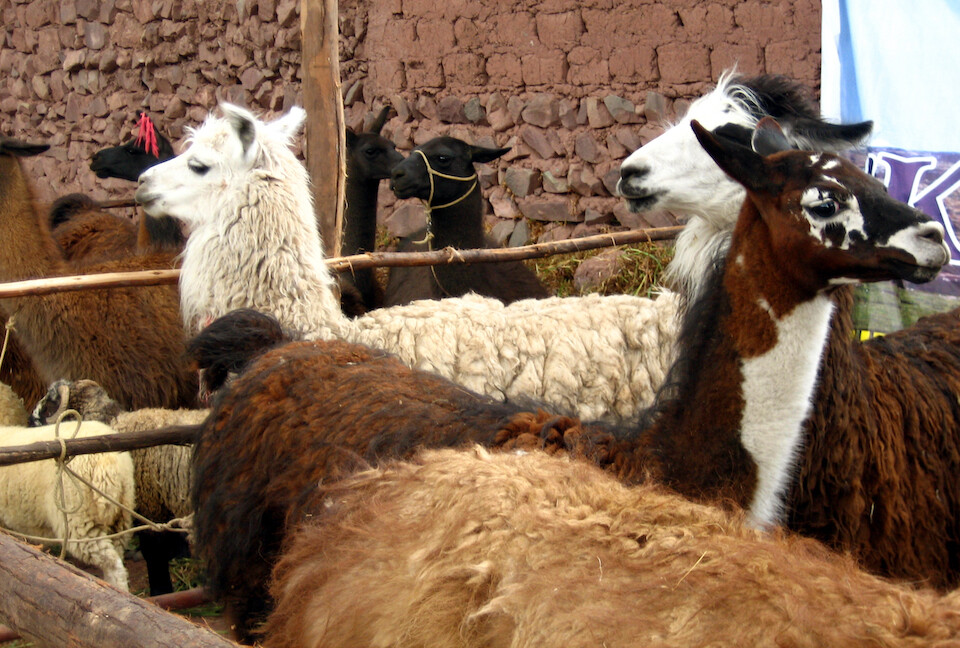
This guy's got a funky face pattern.
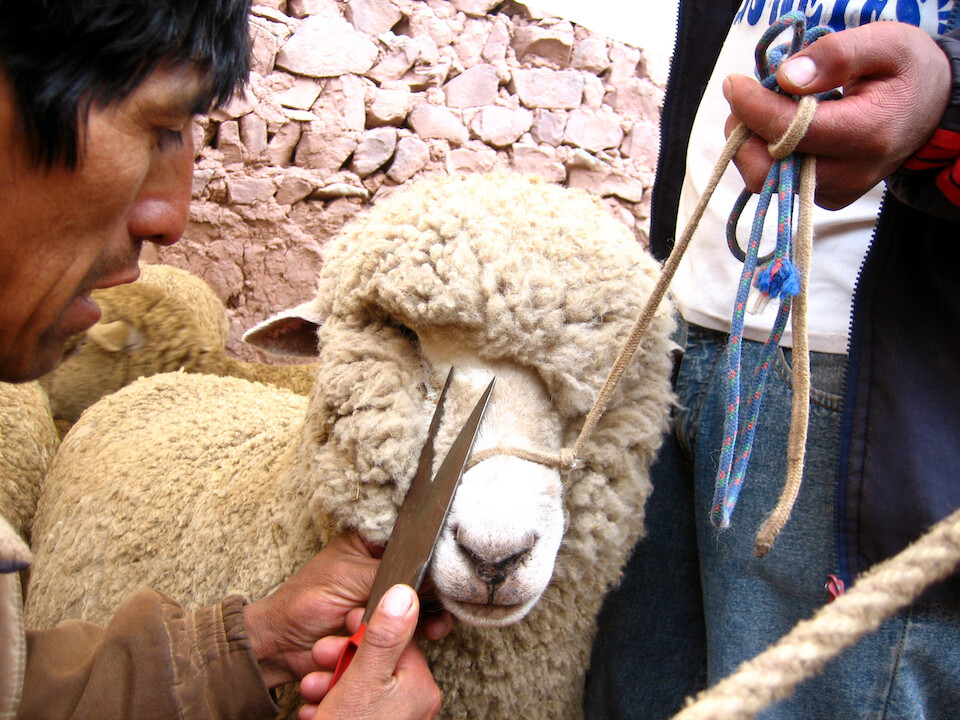
Getting a trim from the barber and surprisingly the animal didn't get it in the eye with the amount it was fidgeting around.
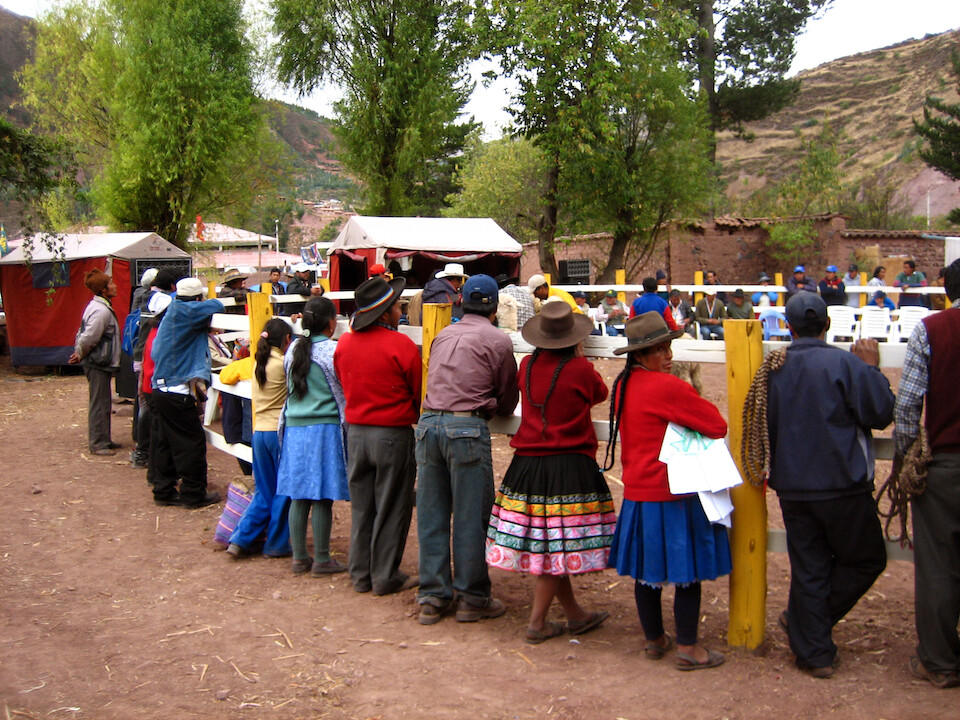
The locals gathering around the biggest draw at the fair...
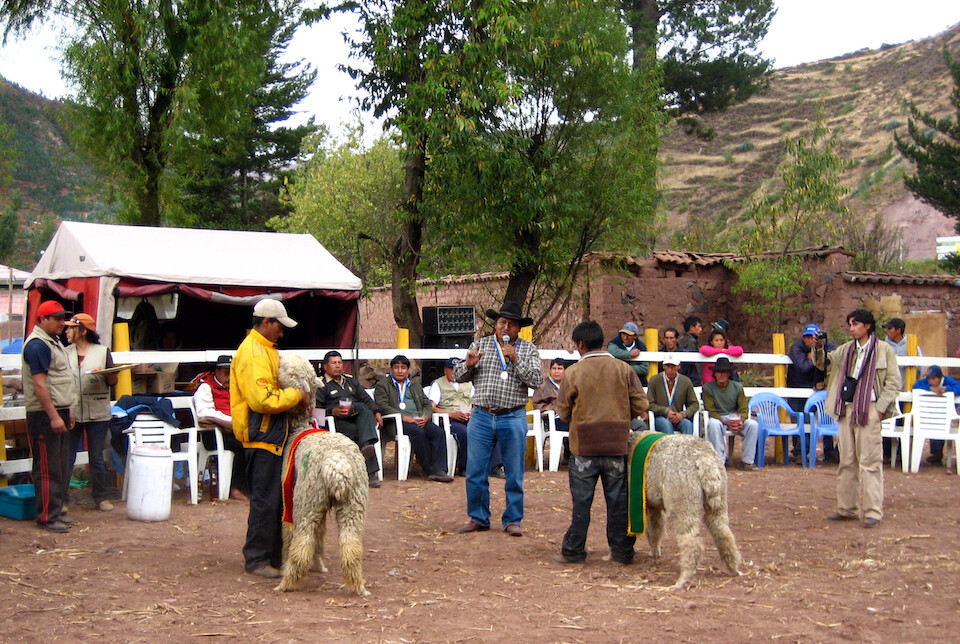
The beauty contest amongst the animals. The one with the red sash is the reigning Alpaca champion.
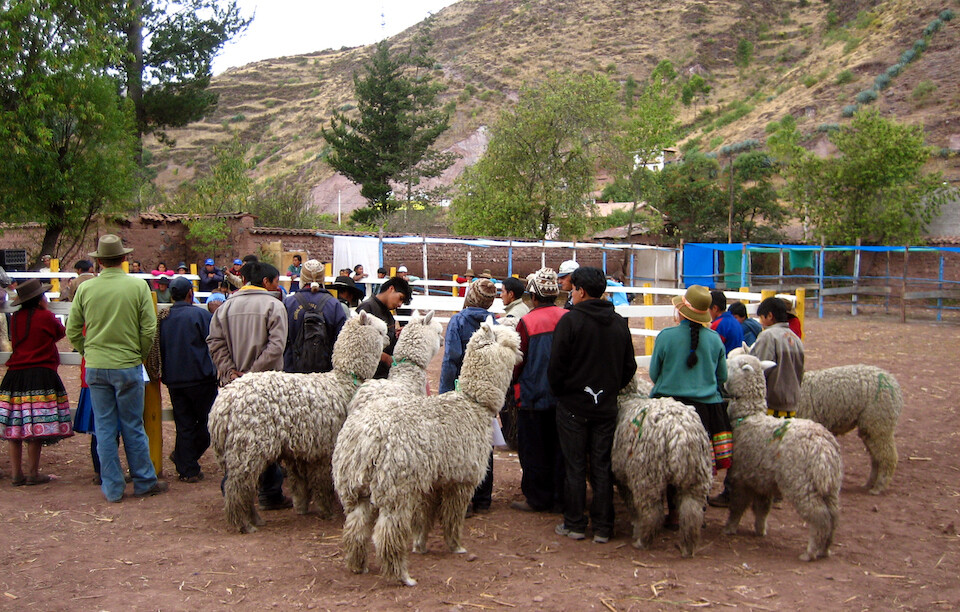
The next round of contestants lining up.
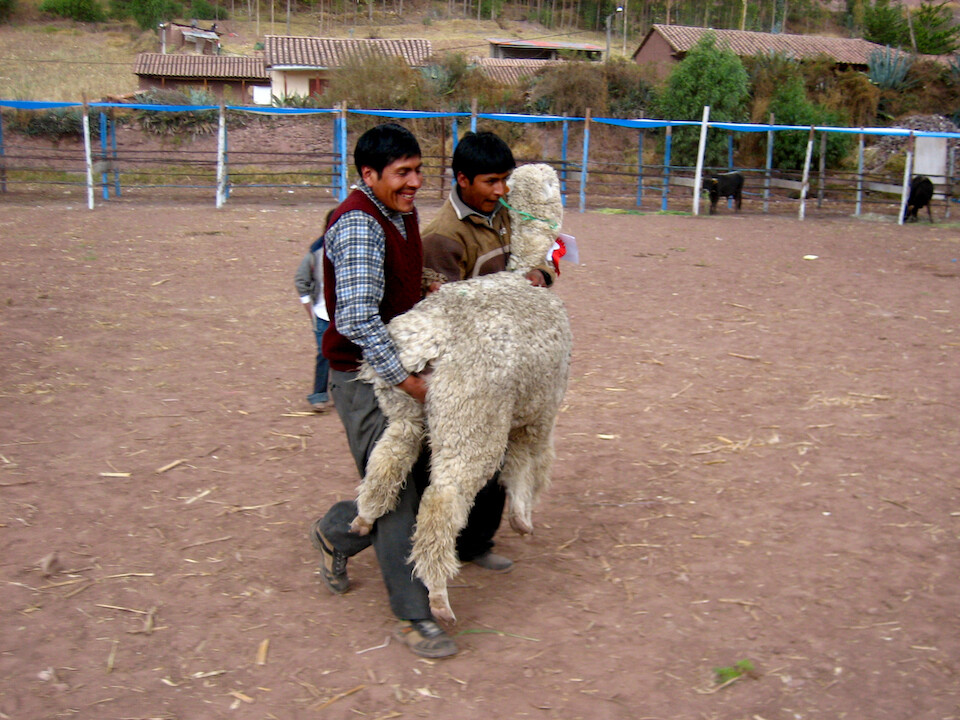
This animal did not want to move, clearly displeased at being disqualified during the first round.
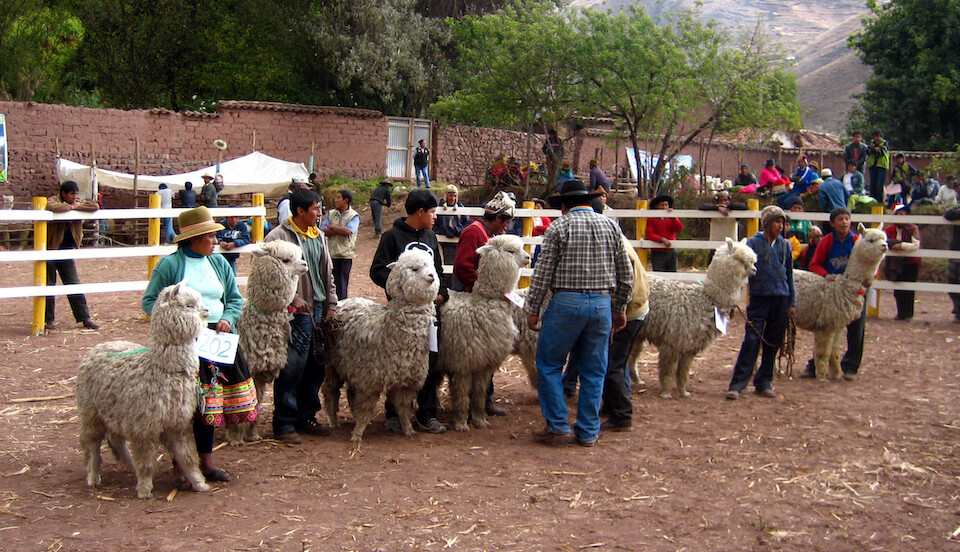
The judge choosing who should move ahead to the next round. He was looking at the quality of the fur.
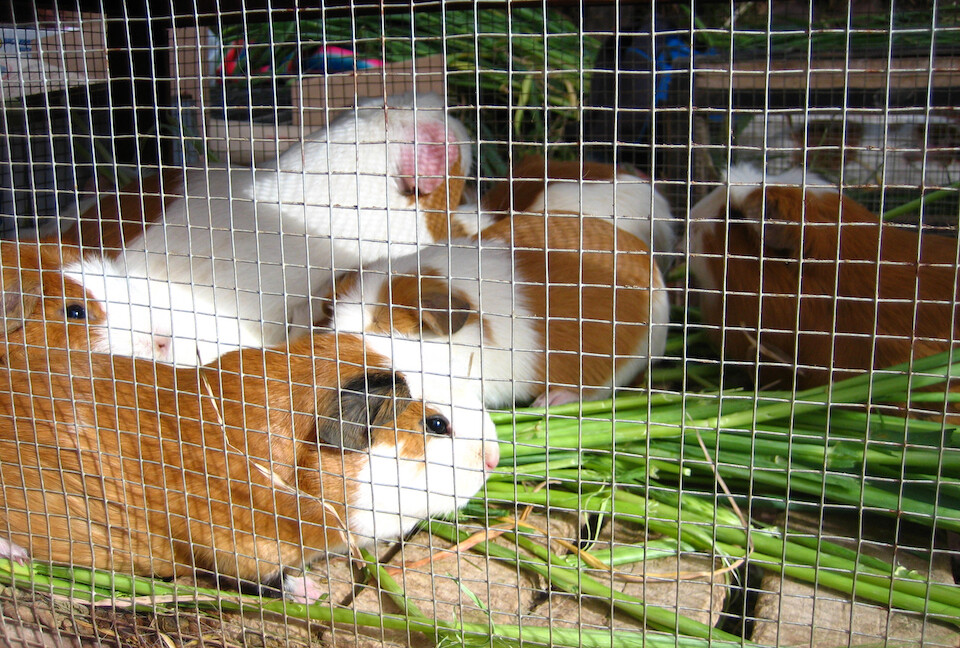
And of course, the most important Andean domestic animal in the small realm, the guinea pig, cuy.

Breeders lining up their best cuy on the judging table.
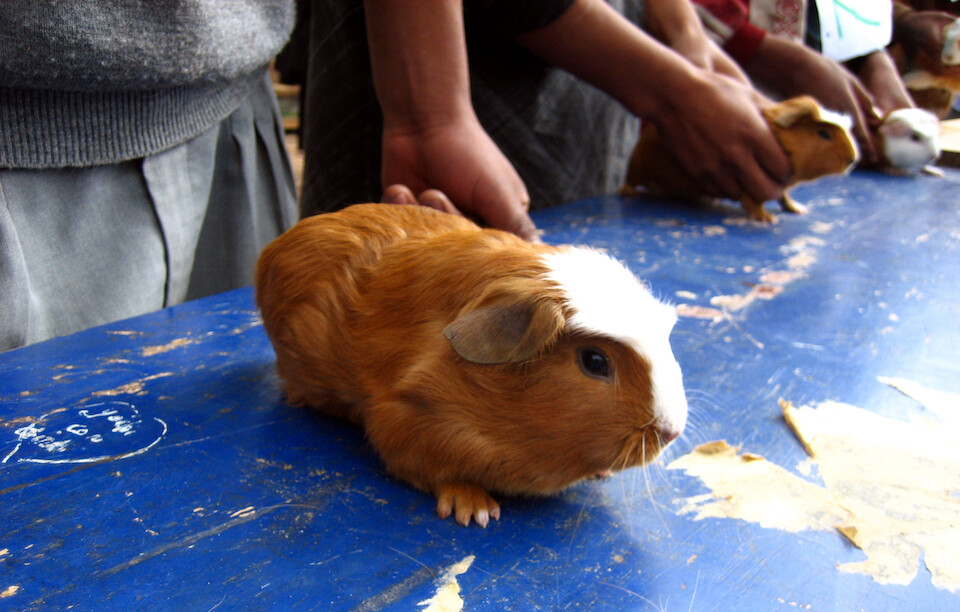
'Ok buddy, you win this competition for us and I'll set you free'
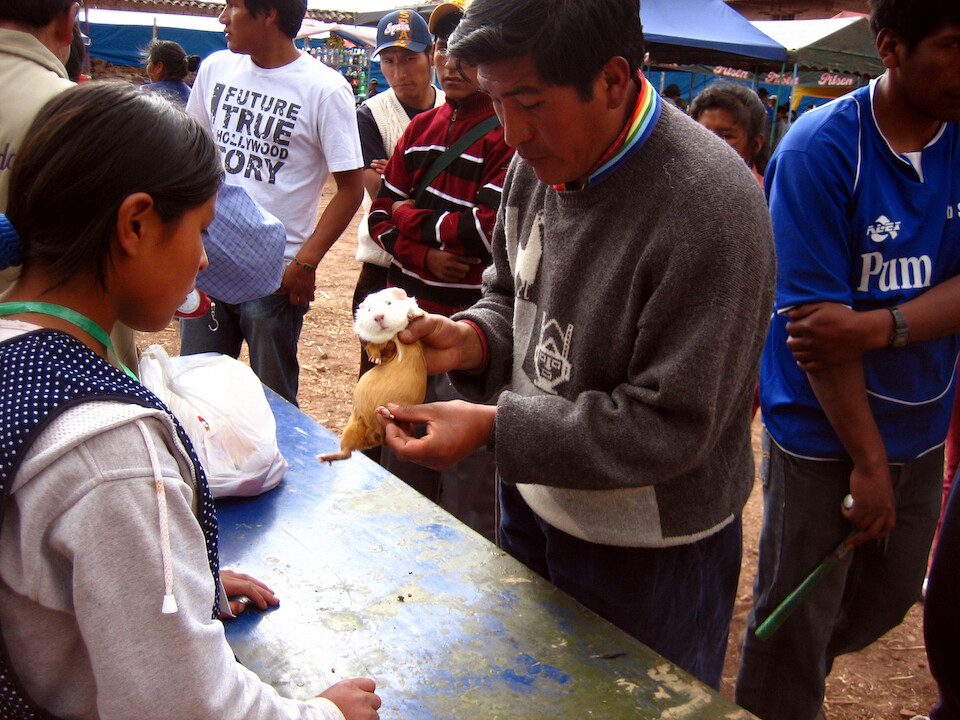
A judge inspecting this little guy.
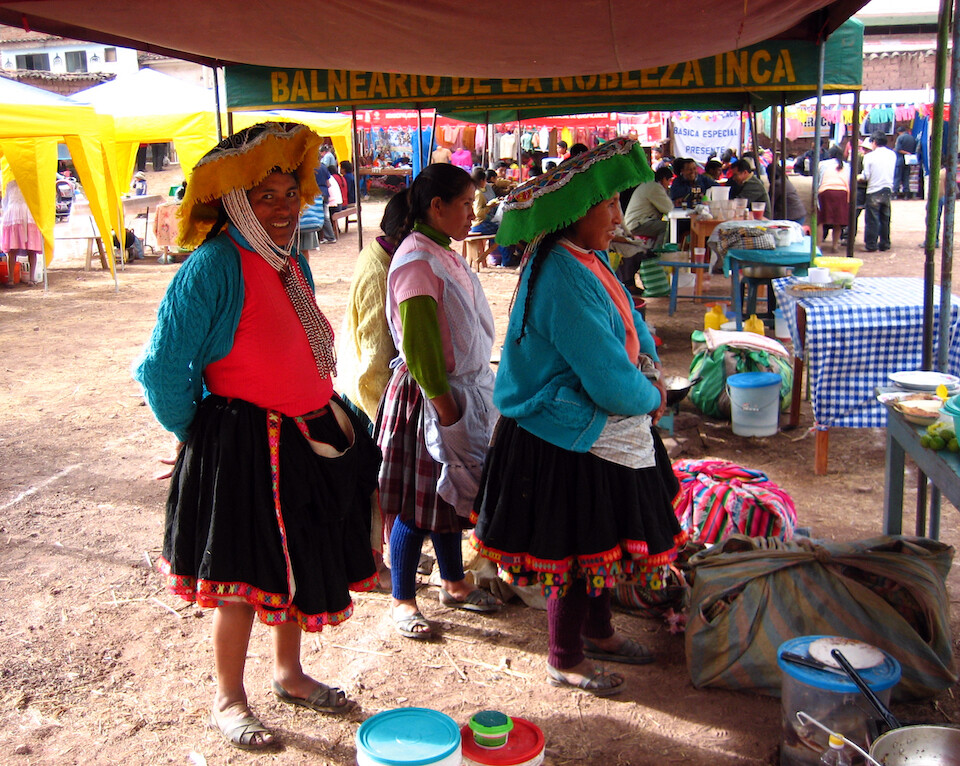
Women wearing traditional clothes of the region at a booth.
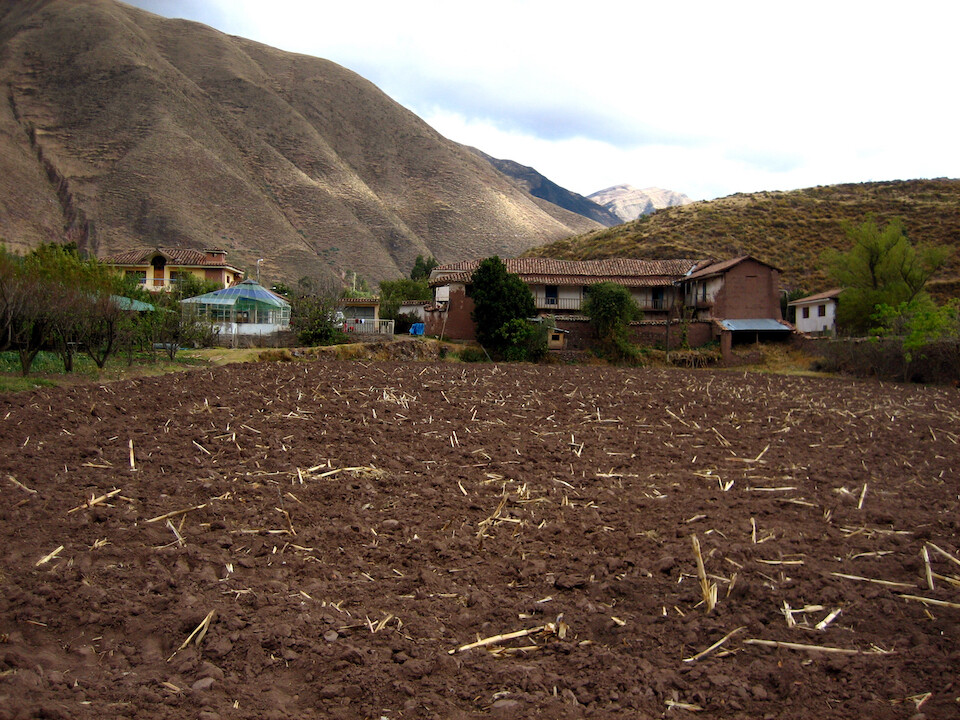
We strolled over from the fair to Helmut's second house. This is the patch of land that he's cultivating.

He's building a small house on the property to house workers when they come from the jungle and a building technique common in this area is mud and straw bricks, just sun-dried and not kiln-fired. I guess they've been doing this since the Inca days.
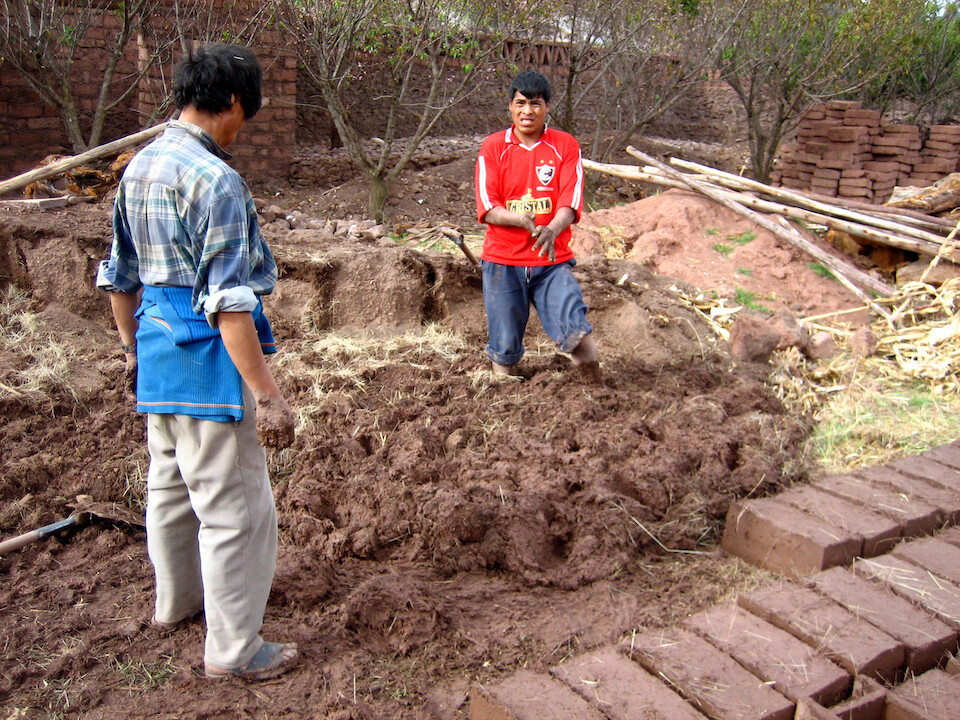
Mashing the mud and straw mix before it gets shaped into a brick.

The house under construction. And the mud also works as good insulation for the cold.
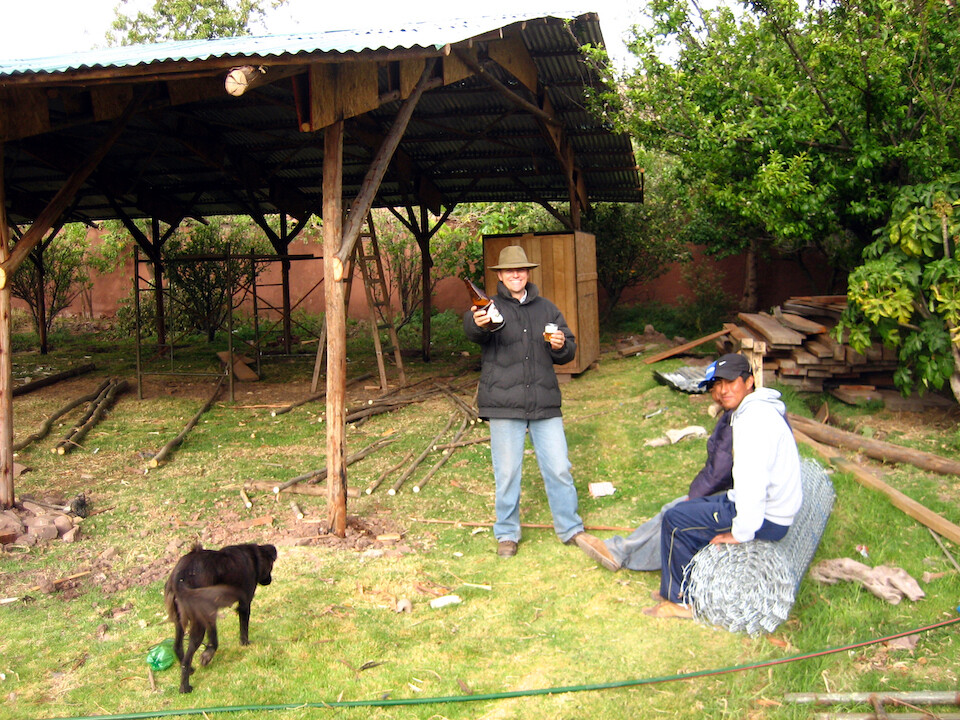
Helmut and the guys just finished putting up this shed to house lumber and an inauguration ceremony in these parts involves all the workers giving an offering to the ground, Pachamama (the sacred Earth for the Incas) and then having a small swig yourself. Here, the offering was some beer that was poured at the four corners and I can easily imagine the past cultures offering whatever liquid was valued at their time.
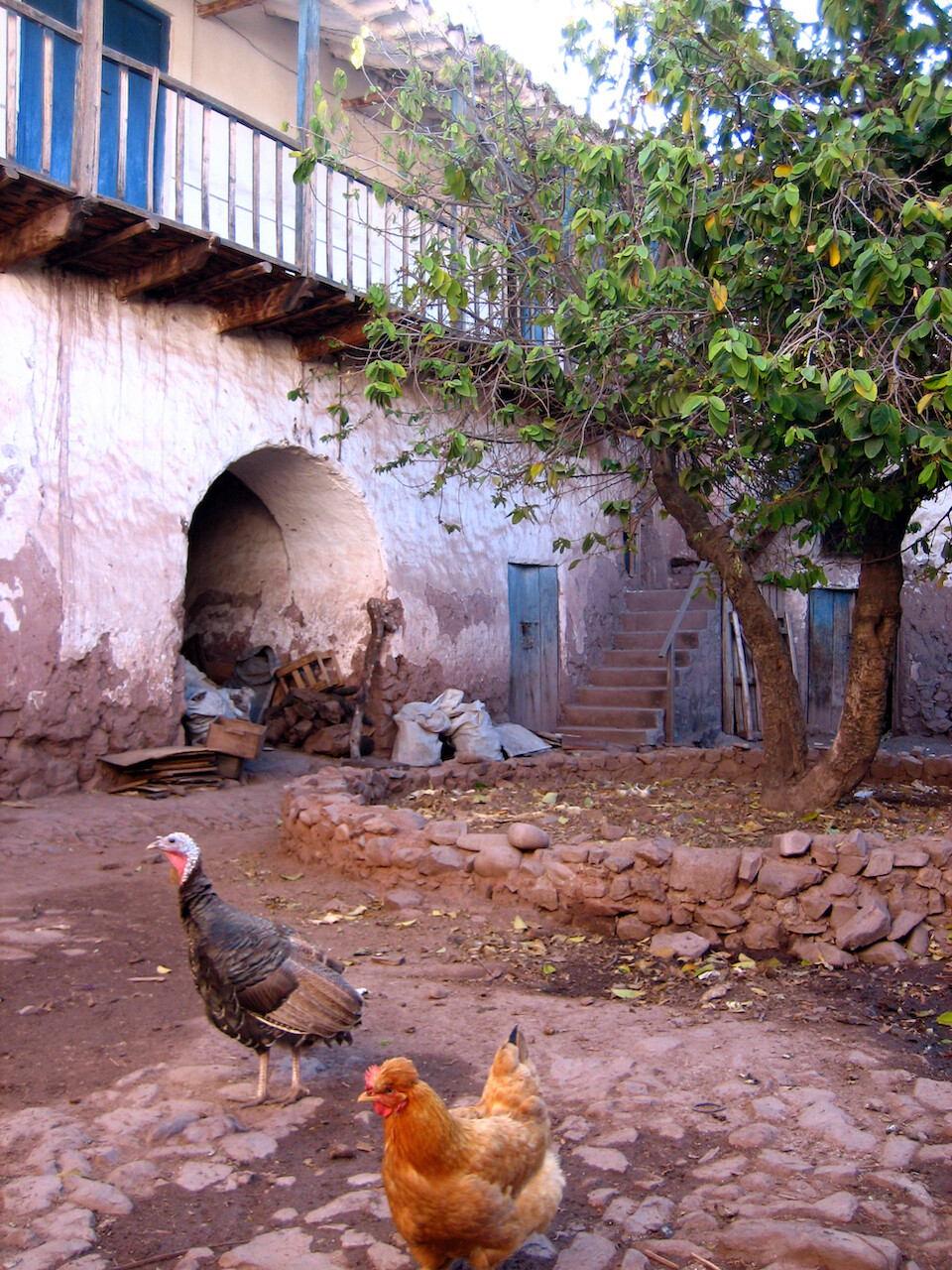
The 300 year old house on Helmut's property. It's unsafe to live in right now since the foundation is crumbling and he said it's more expensive to keep this house up, rather than to build a new one. He said a Spanish general used to live here according to the local history.
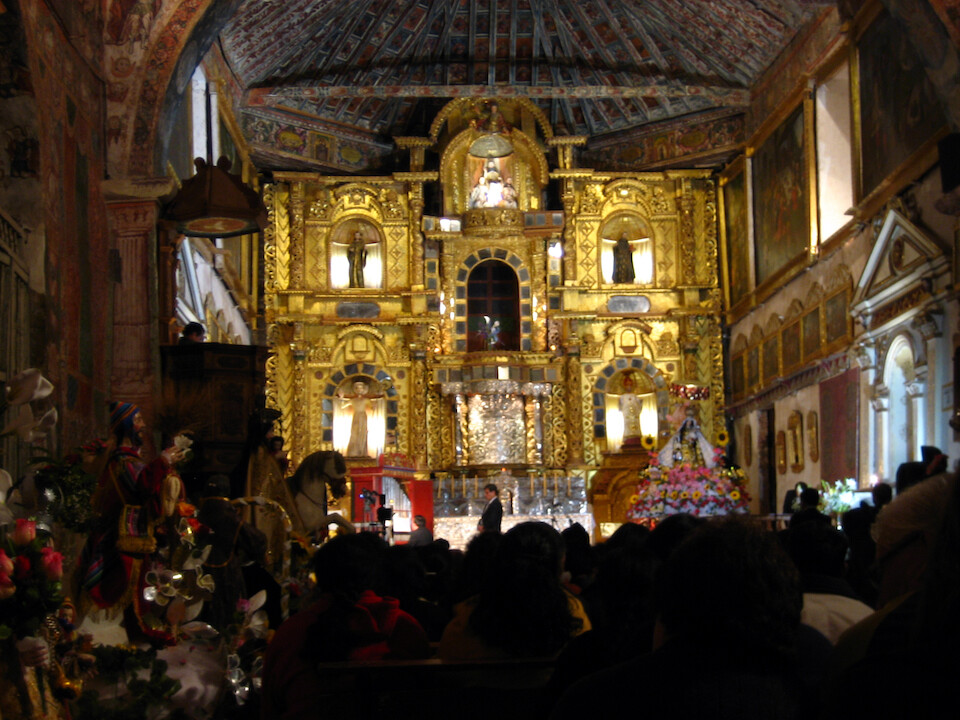
That evening was a special affair in Huari. An old organ, dating to the 16th century, from a nearby church was carefully restored by specialists and tonight was its showing to the public. A organist from Argentina came to inaugurate the organ and lots of dignitaries were at the show as well, people and groups that had sponsored the restoration. The performance was about an hour long and quite interesting. The organ is the red object that's in the lower left on stage, under the grand, gold-leaf covered altar.
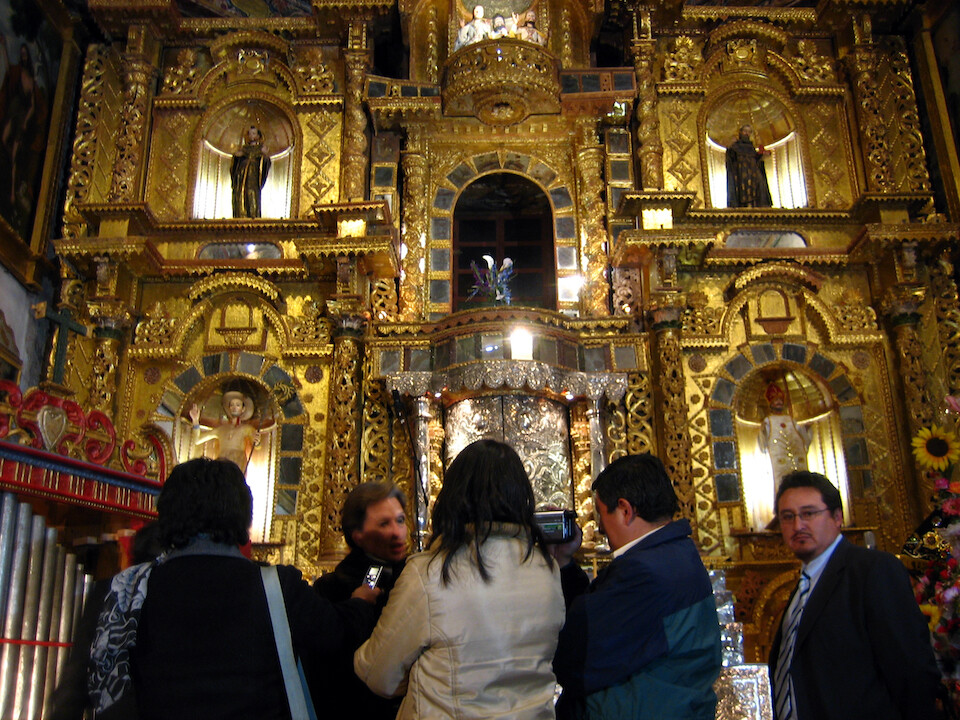
The French government was one of the major backers through the World Monuments Fund and so the French Ambassador to Peru was here for the show (the fair lady being interviewed by the local media).
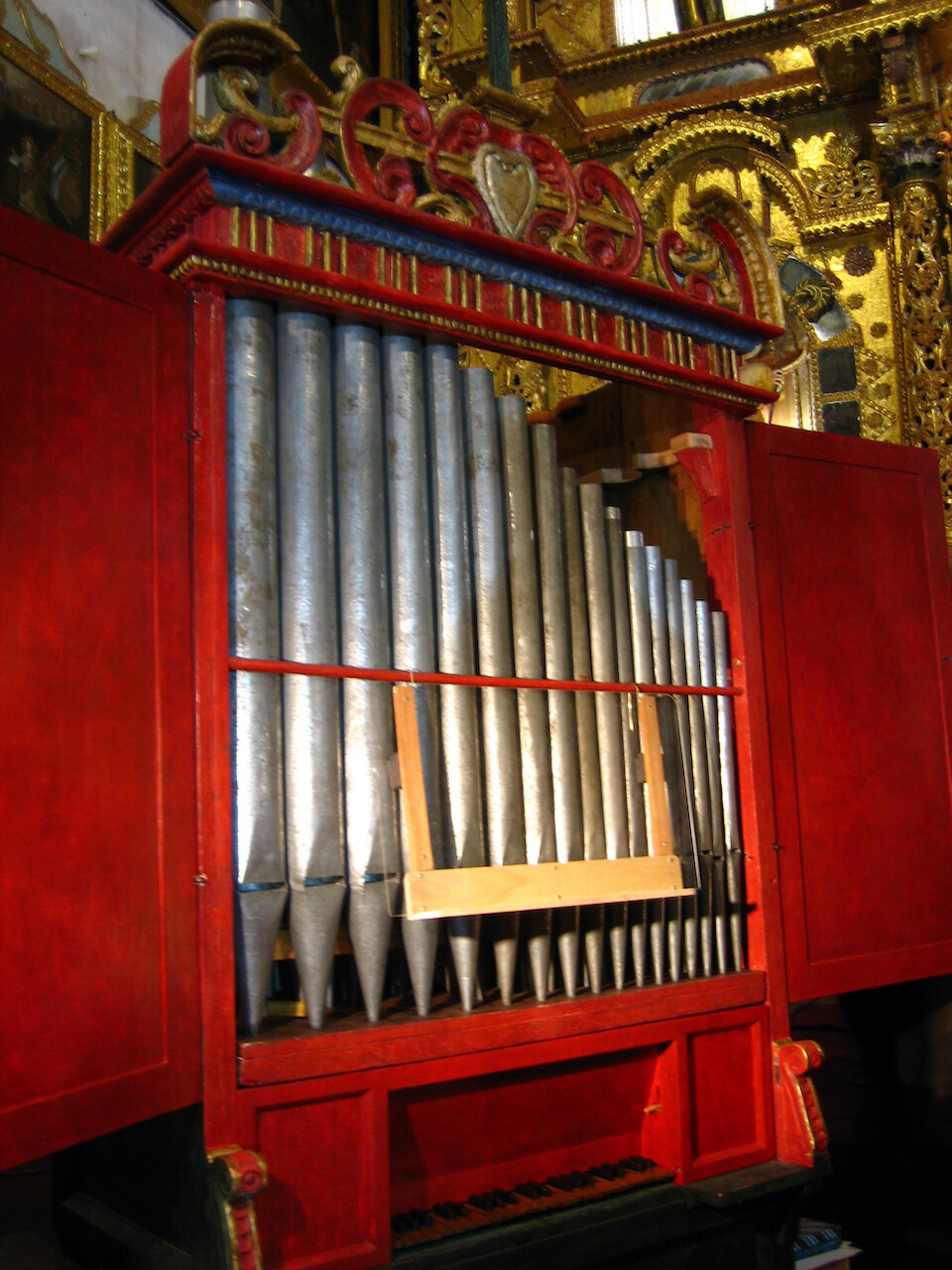
The organ from the 16th century that was restored and brought back to life.
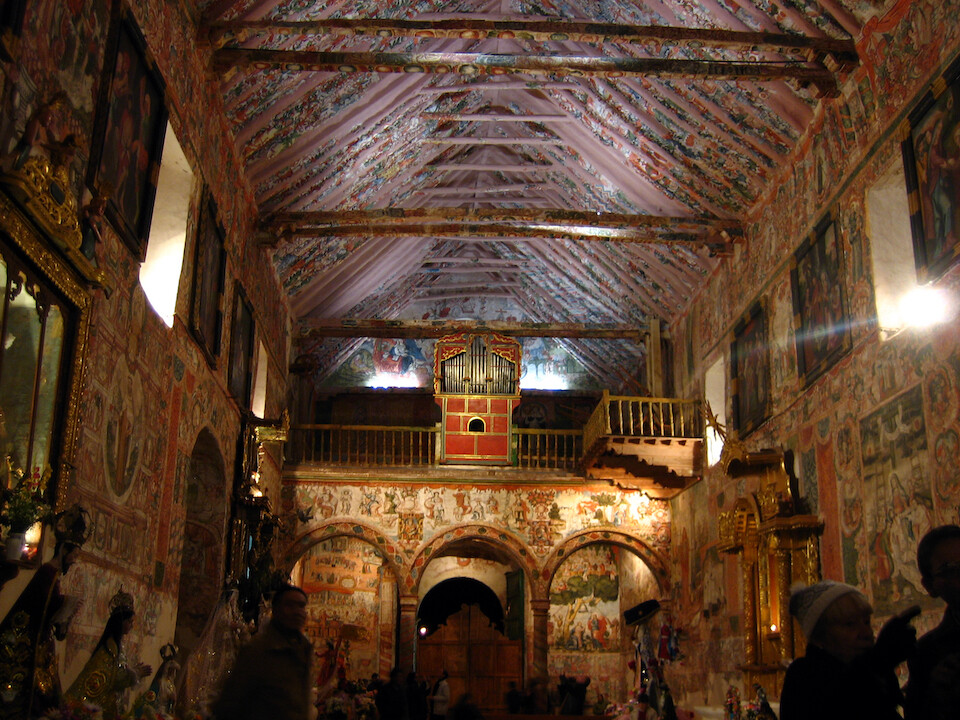
The church itself at Huari is quite a sight. All the walls were painted telling various biblical stories.
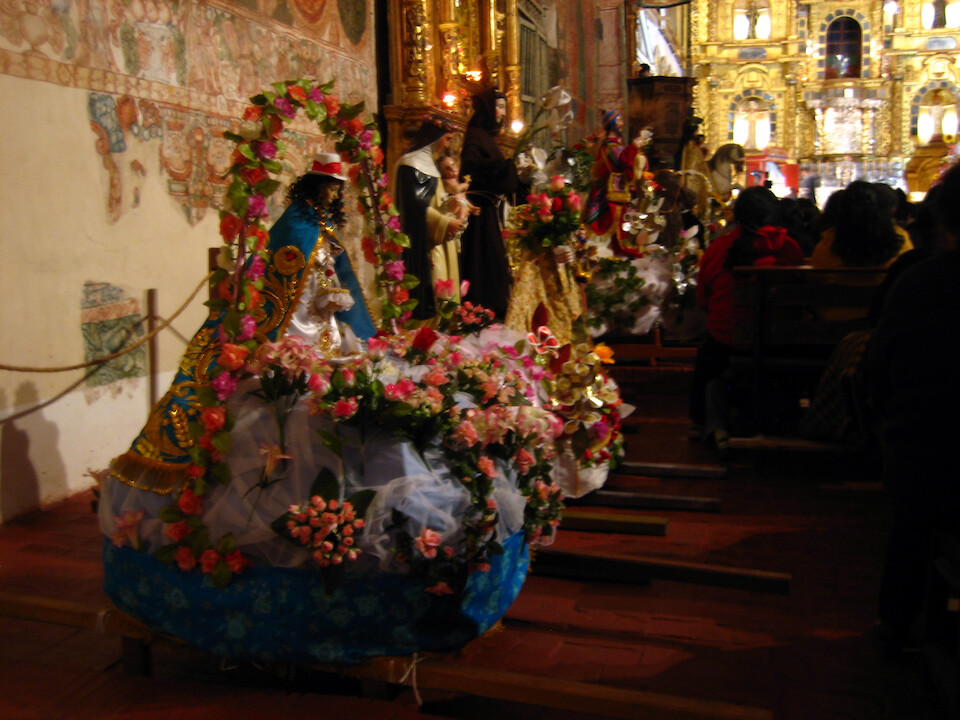
Statues of the Virgin Mary and Jesus ready to be carried around during festivals.
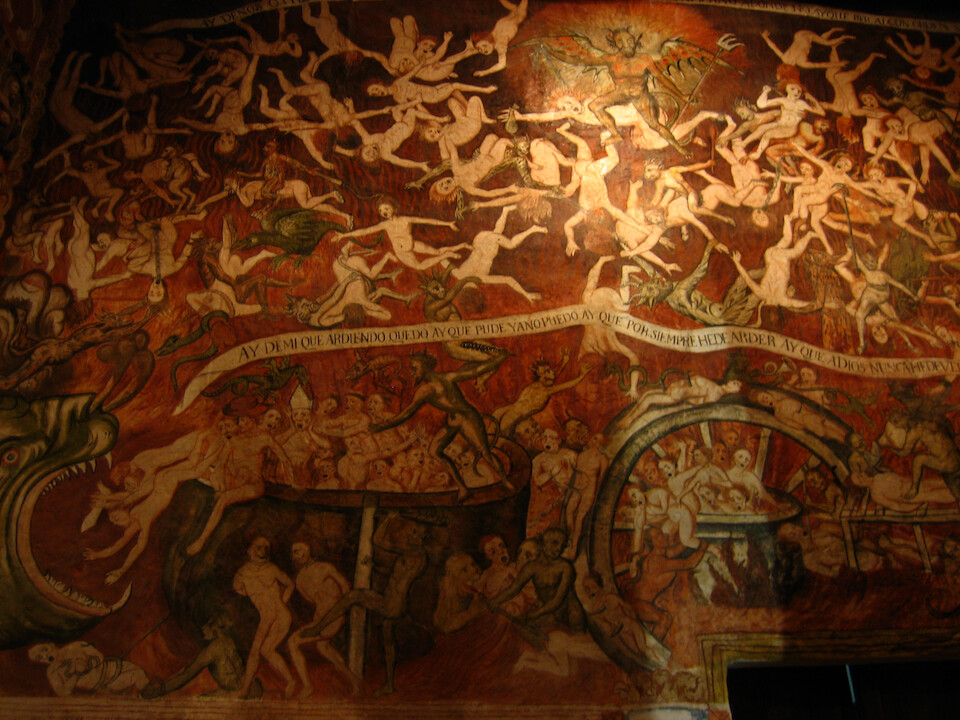
A grand fresco by the entrance depicting a gruesome Hell and encouraging all sinners to repent before entering the house of god.
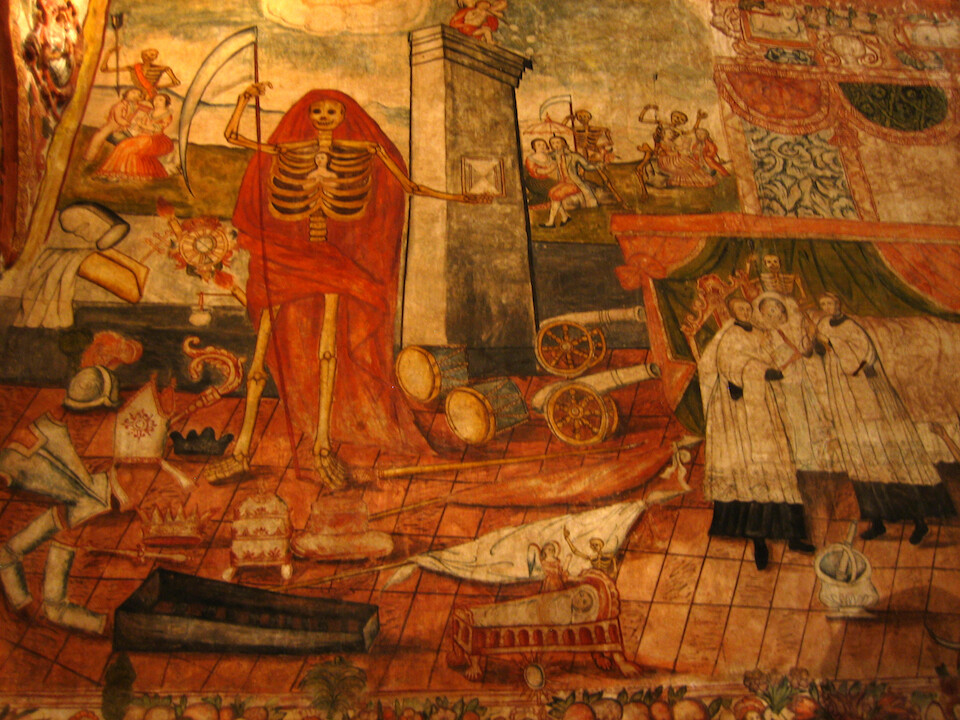
I would say most of the frescos were quite macabre with lots of death motifs. I guess scare-tactics worked quite efficiently in converting the pagan masses to Christianity.
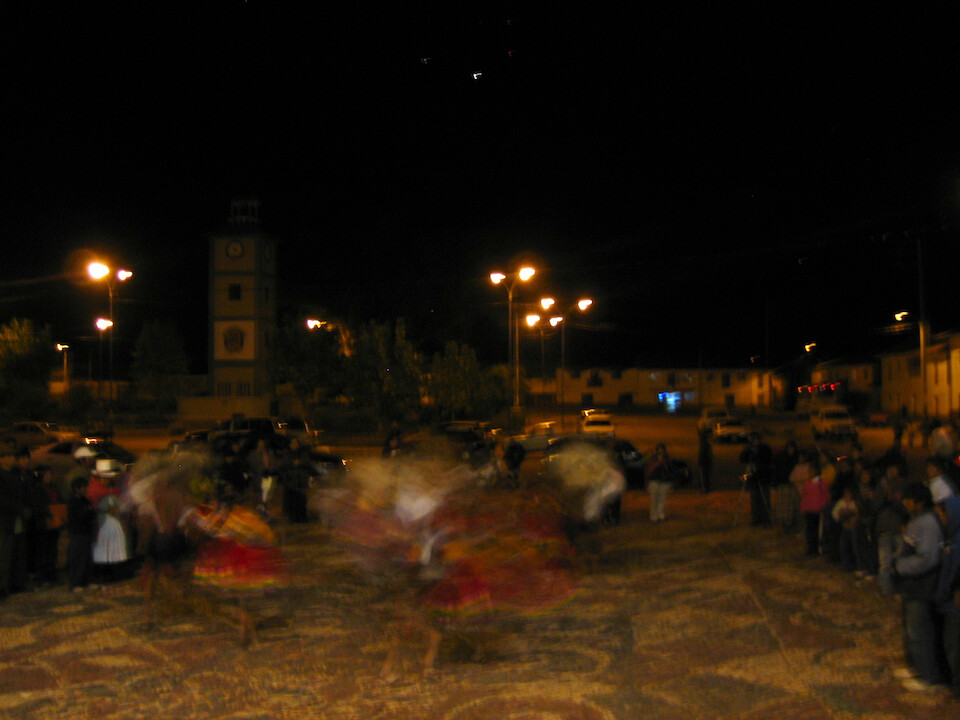
After the performance, hors d'oeuvres were served along with pisco (Peru's brandy) as the local kids put on a dance outside.
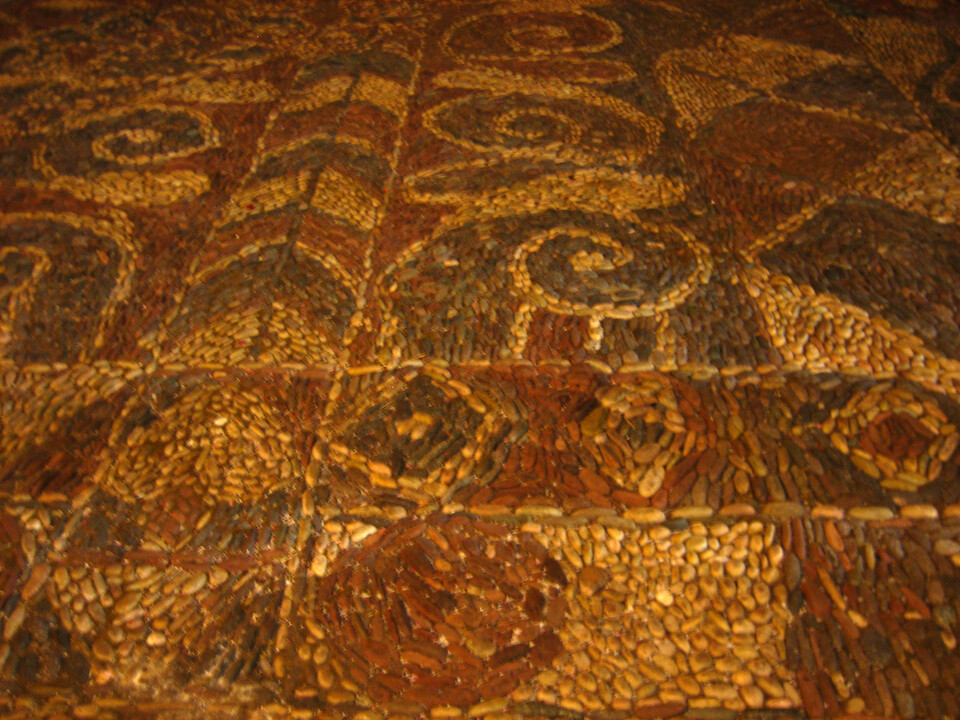
The front yard was surfaced and decorated with colored pebbles.
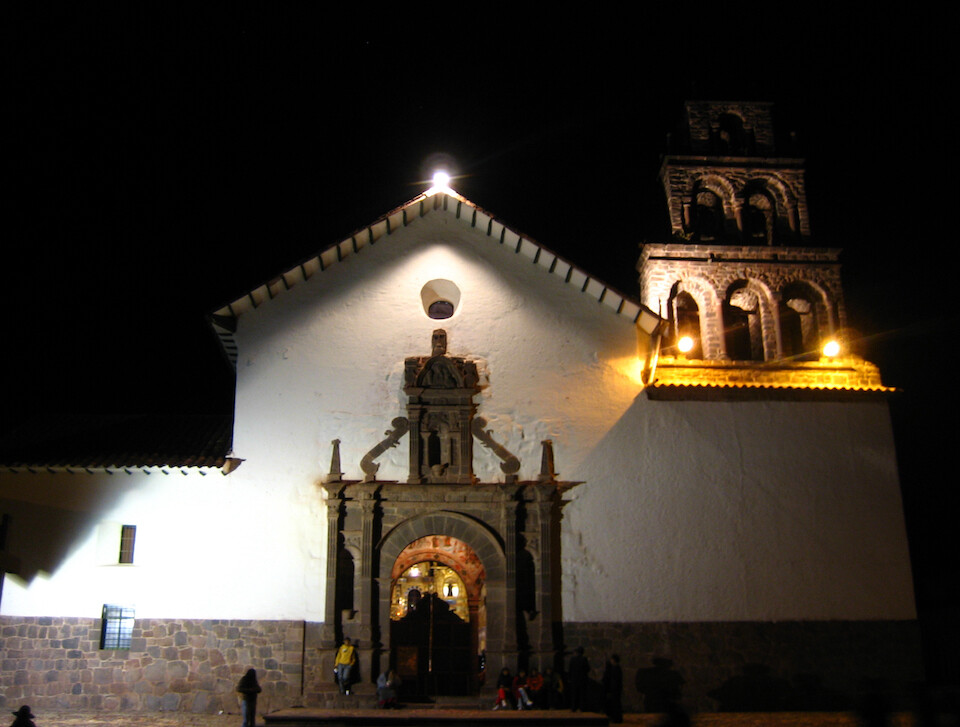
The bland exterior of the church being modest of the rich visual treat on its insides.
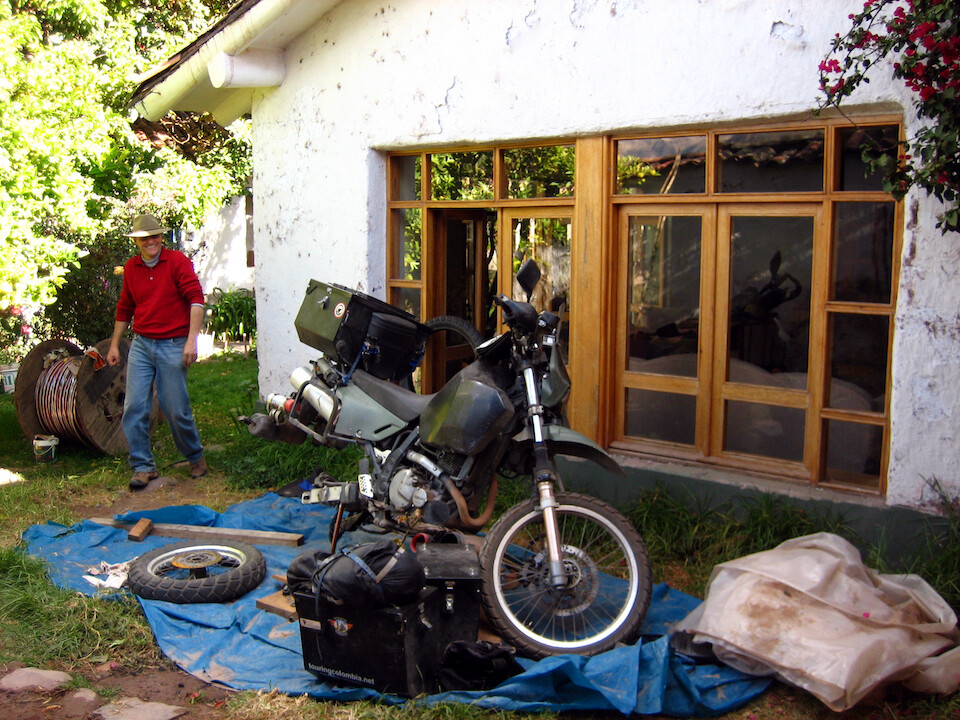
I still hadn't gotten around to putting in the new bearings and poor sanDRina was without a rear wheel for a few days.
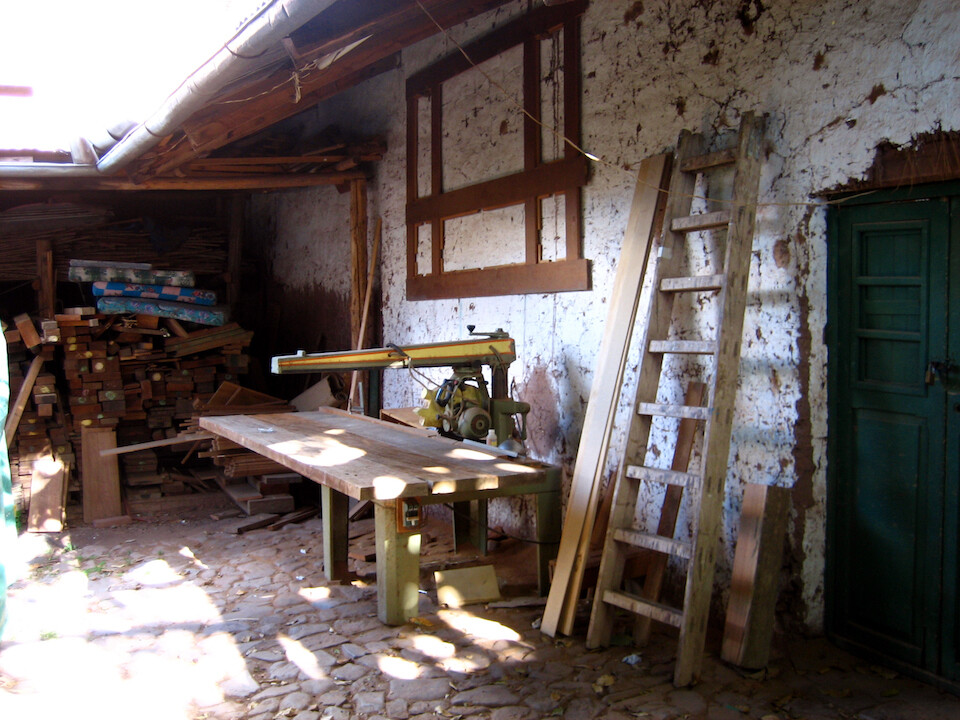
Helmut's work area.
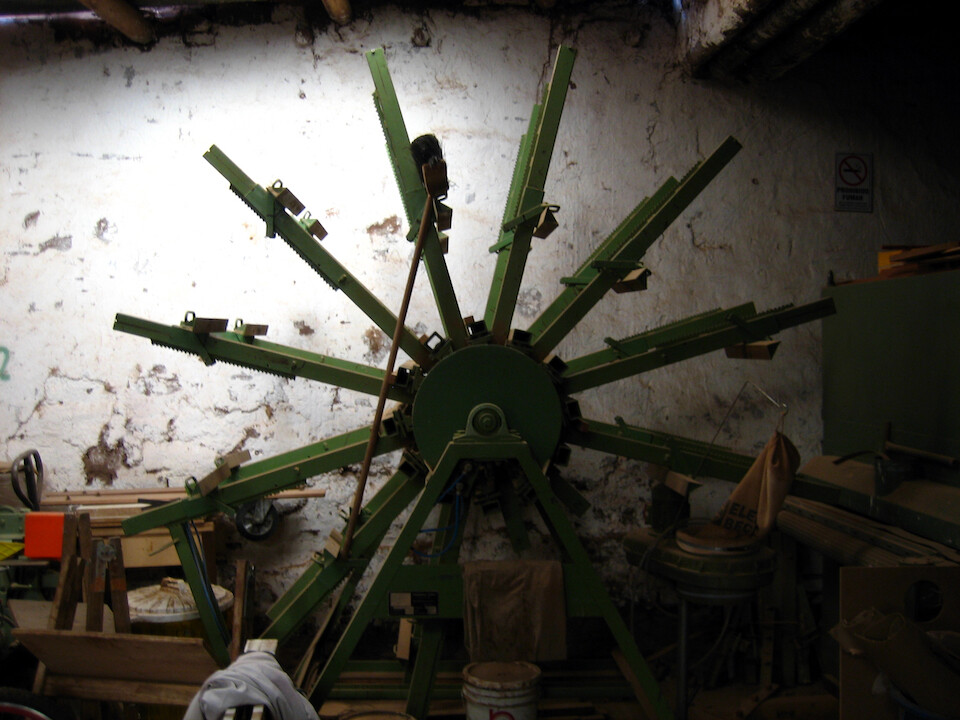
A machine used to dry wood that's been adhesively bonded. The pieces are put on each arm and then spun around.

His main shop area where furniture construction takes place.
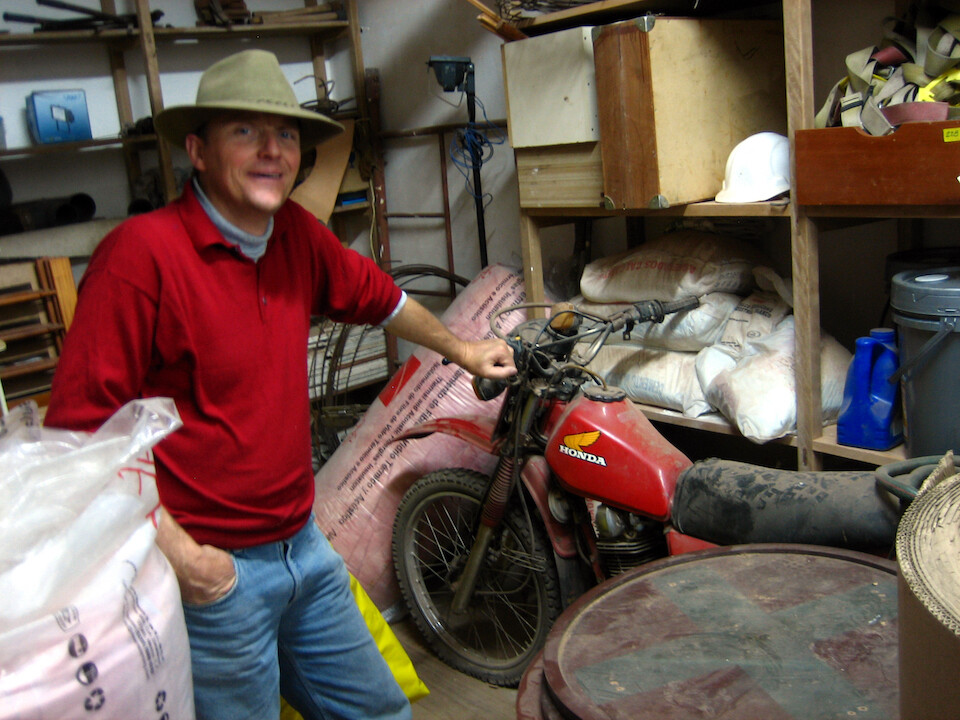
Helmut showing me his neglected Honda 200 cc bike. He said he was now inspired to get it out of storage and have it running again.
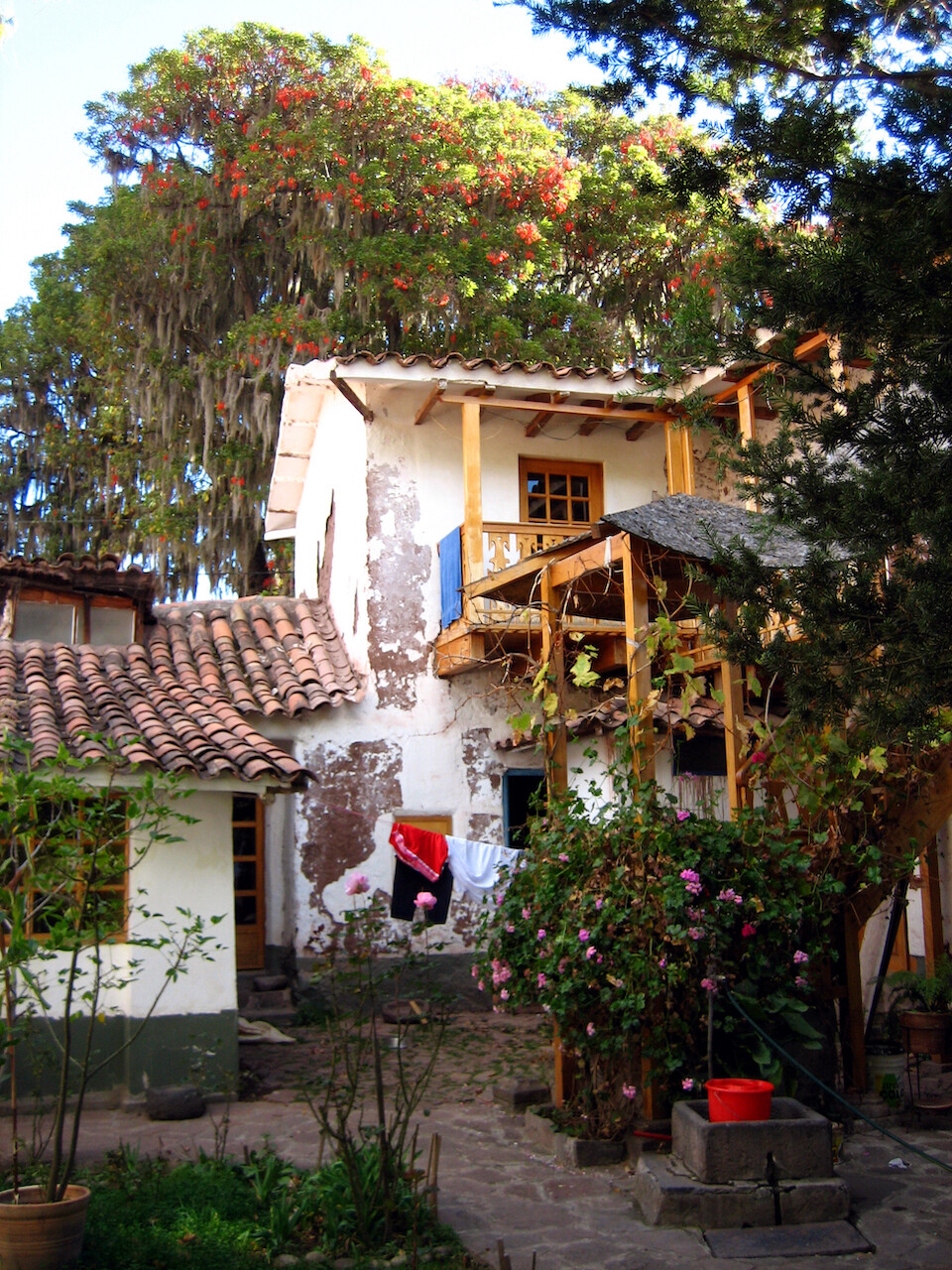
Helmut's beautiful house in Andahuaylillas. It's about 300 years old also.
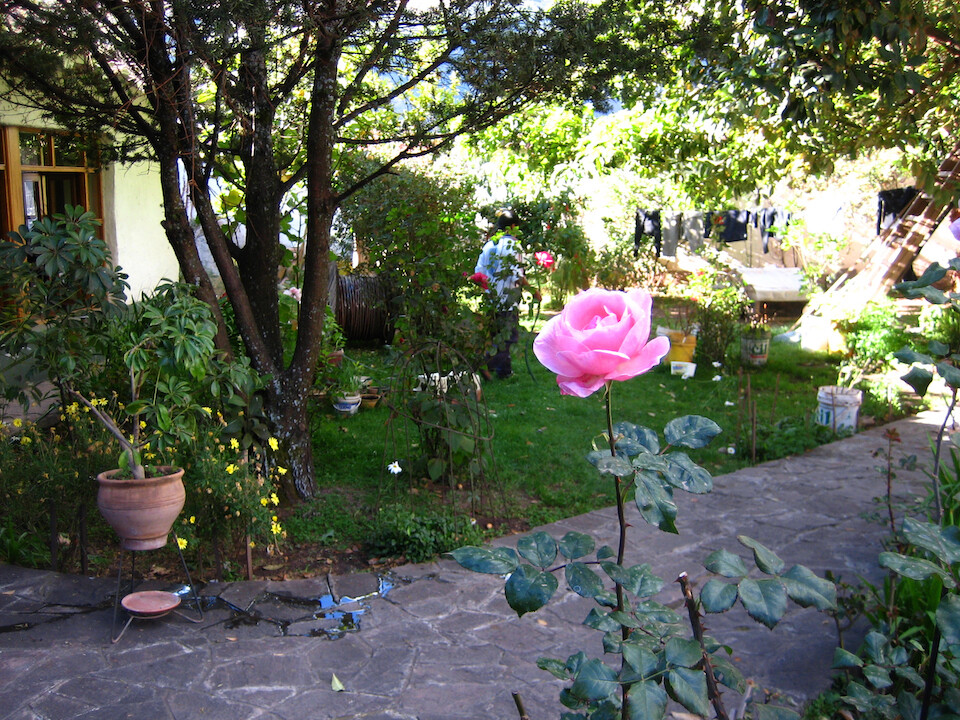
The grounds were well-kept with flowers and various fruit trees.
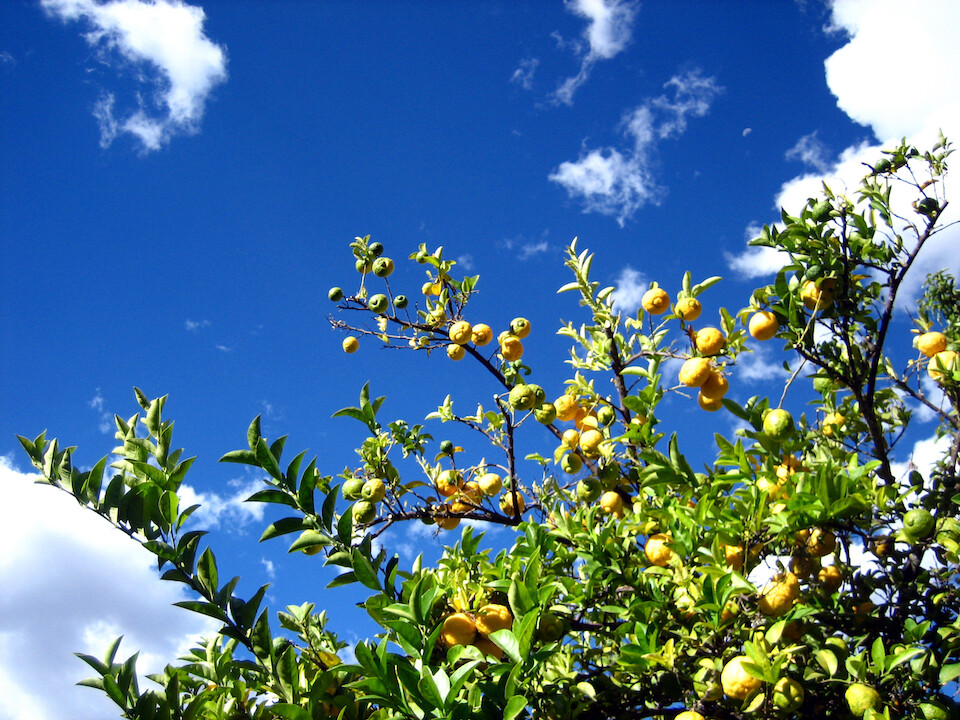
Lime tree shining in the sun.
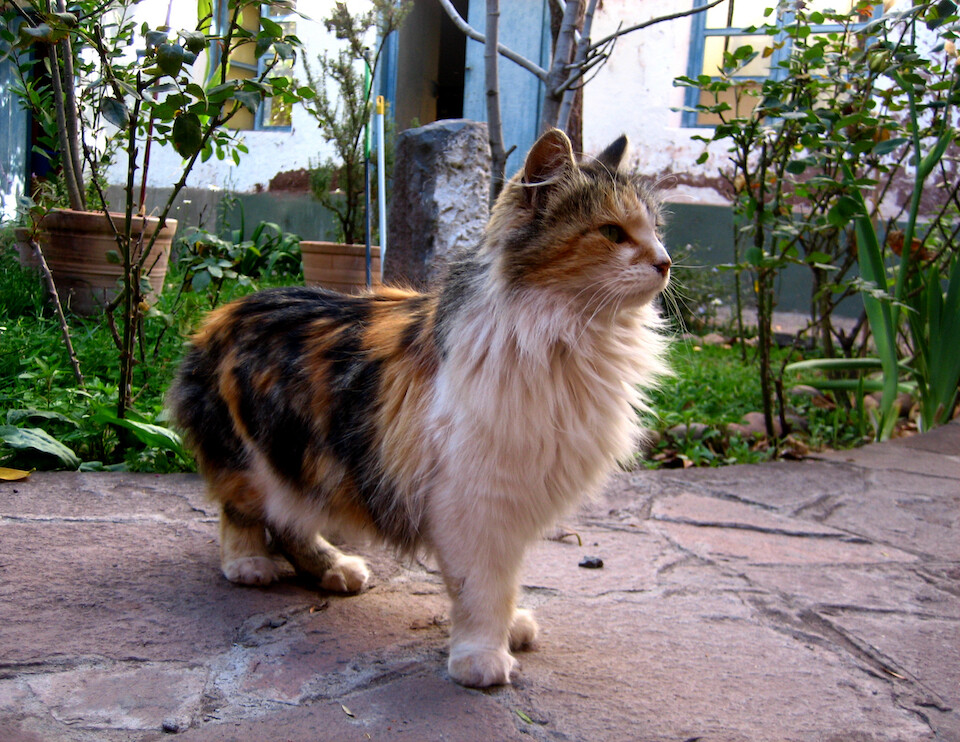
One of his cats, Sasha that was very mean to his dog, pouncing on his face if he got close.
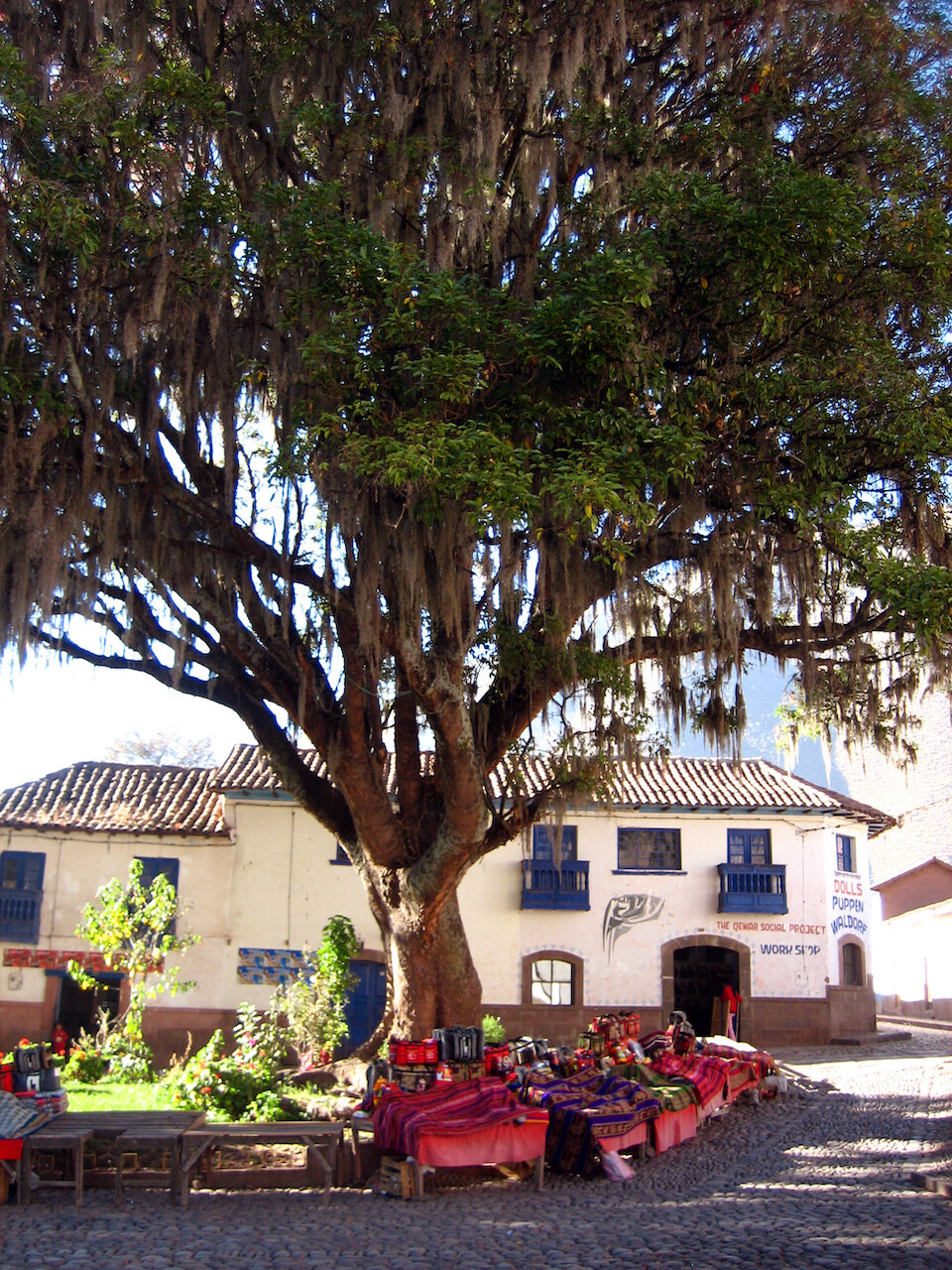
A shady tree in the central plaza outside.
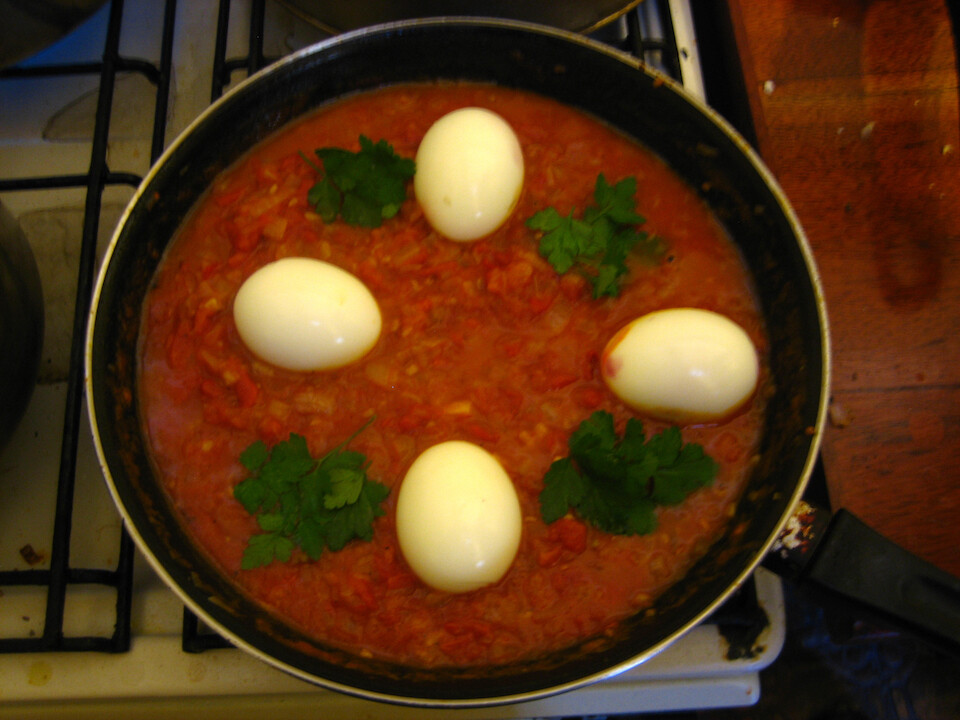
That evening we made an egg curry when his girlfriend from Cusco came over.
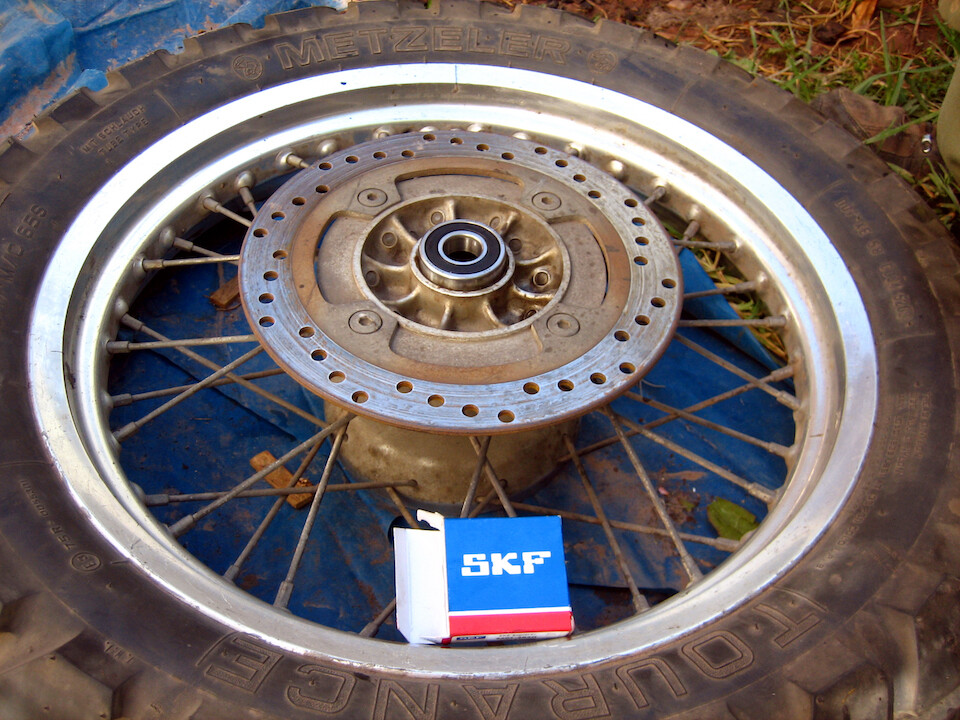
Finally installing the new SKF bearings and putting sanDRina back together, ready to head into Bolivia.
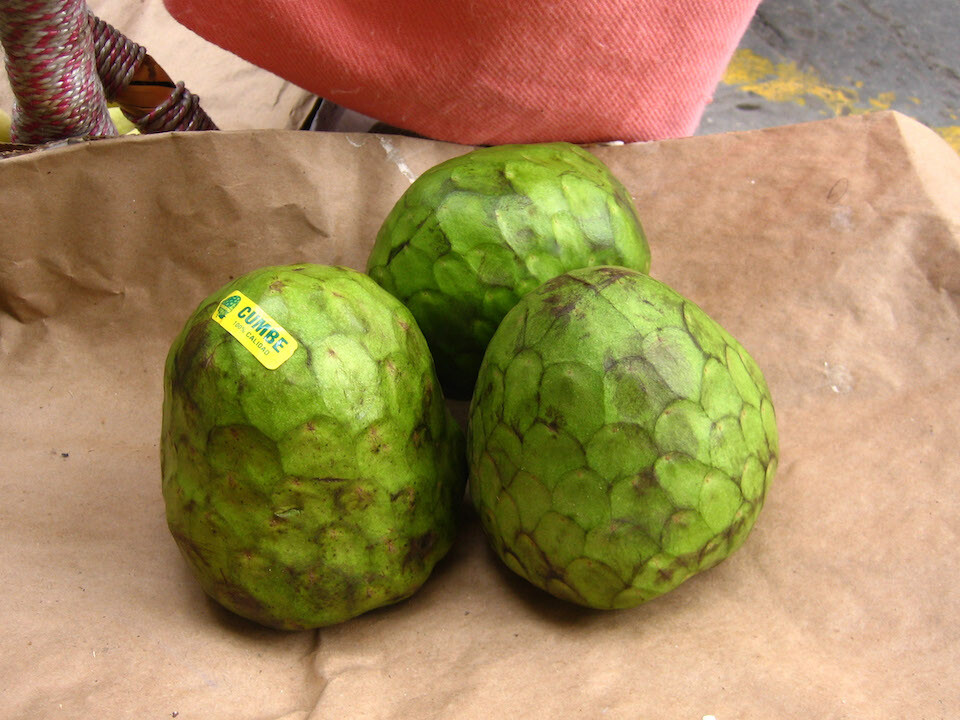
Buying one of my favorite fruits, called Chiri Moya here and referred to as Custard Apple in India.
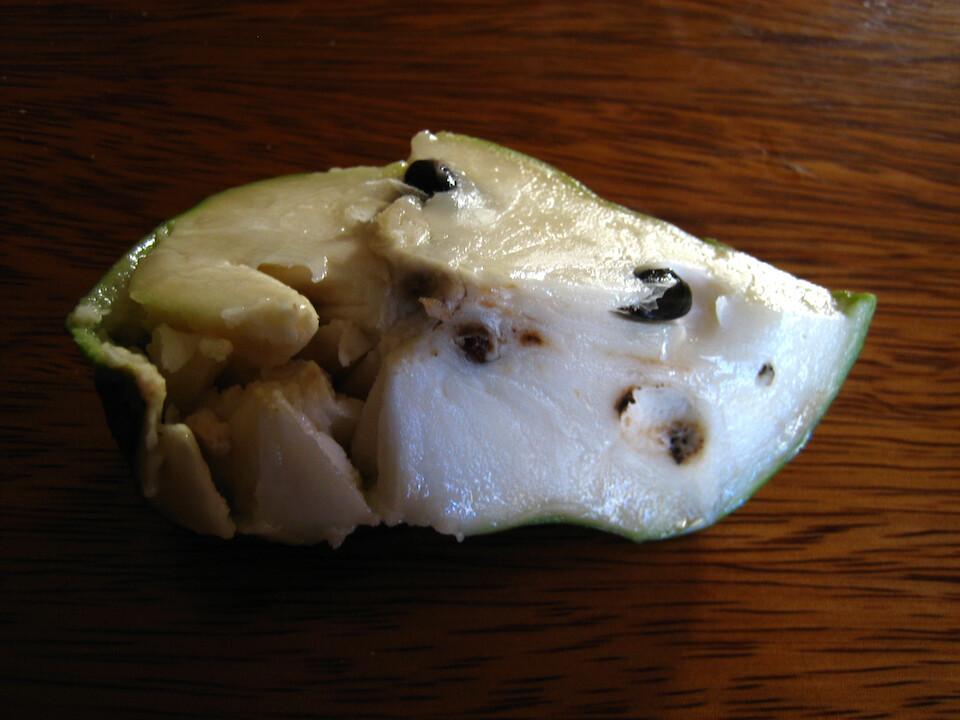
The flesh is sweet and tasty.
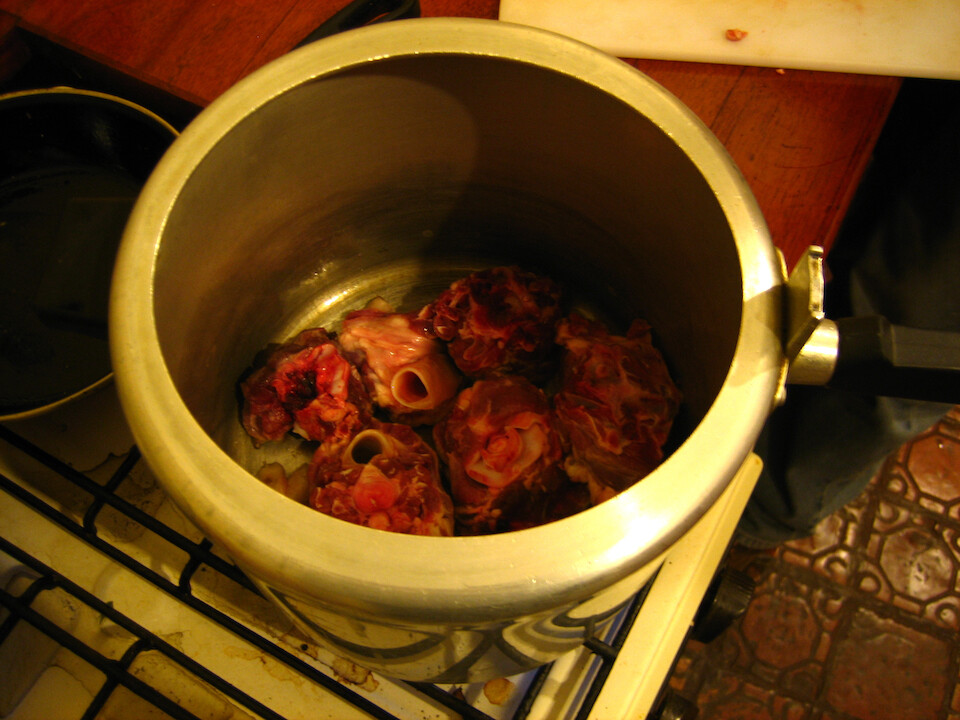
Preparing a mutton (sheep) soup for my last night at Helmut's.
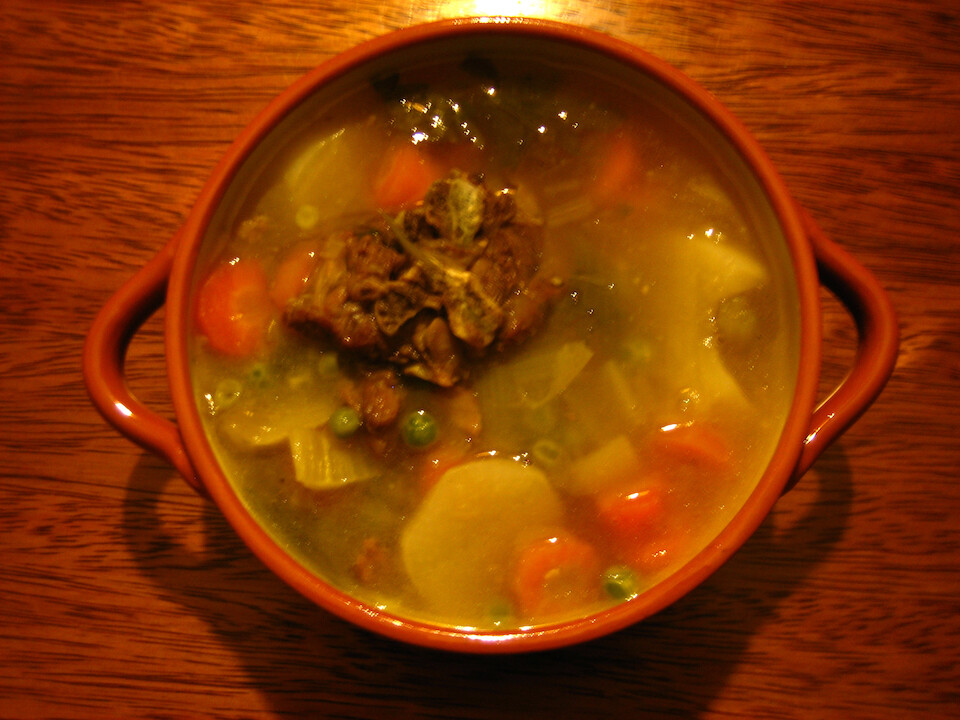
Hearty and very tasty. We had lots of good, stimulating conversation at the dining table and whilst he spoke decent English, we conversed mainly in Spanish, since he was more fluent and comfortable with that. I enjoyed my stay and he said like-wise. It's the unexpected events that make this trip a journey.
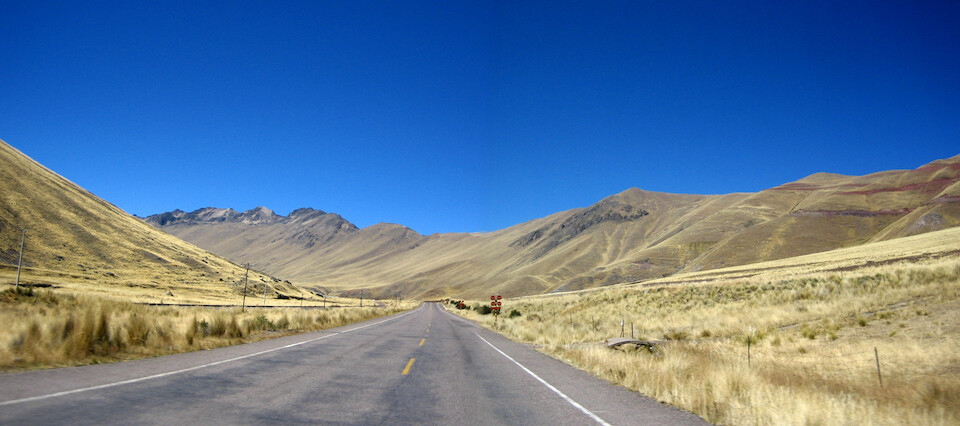
Happy to be back on the road and rolling smoothly along the altiplano south to Puno.
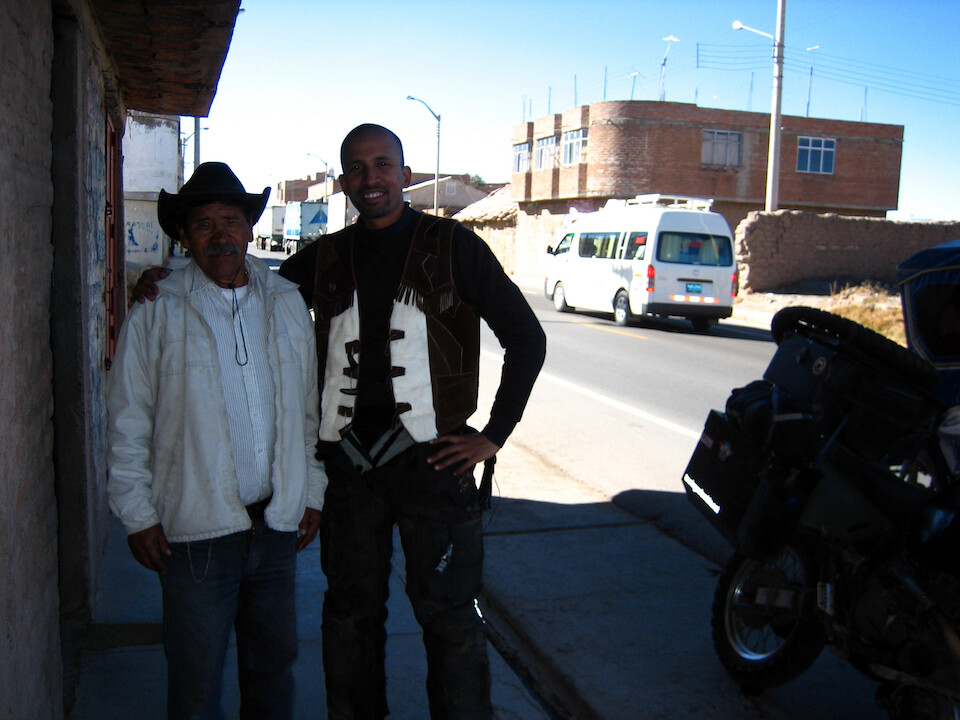
I stopped for lunch near Juliaca and the restaurant proprietor's father wanted to show me his leather cowboy vest after seeing all my biking gear. Looks pretty good, eh?
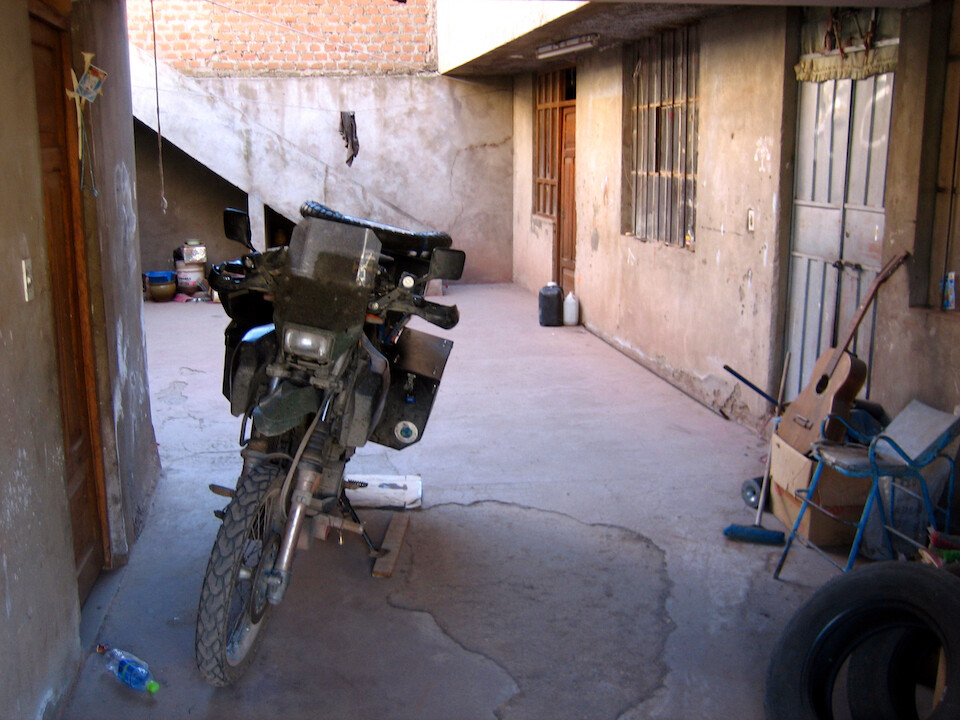
Spending a night at Lizandro's in Puno, through CouchSurfing. It was cold at around 3,800 m (12,500 ft).
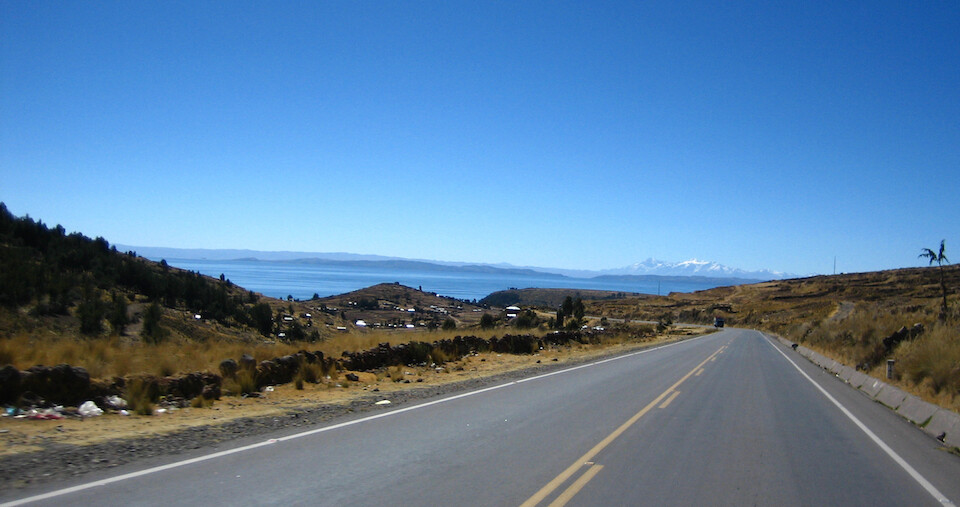
Taking the beautiful ride along Lago Titicaca towards the Bolivian border with snow peaks from Bolivia visible in the distance.

Panorama of the immense Lago Titicaca. It's the world's highest, largest lake at an altitude of around 3,800 m (12,500 ft) and is the largest lake in South America. Geologically speaking, the whole altiplano was once under water and this lake is all that's remaining. It was very sacred to the Incas with their myths saying that their civilization was born through the sexual chakra (energy focus) that is Lago Titicaca. The lake is fed by glacial melt and rainwater and has slowly been dropping in volume, due to the reduction in size of all the glaciers in the area and shortening rainy seasons.
Click here to see the high resolution version.
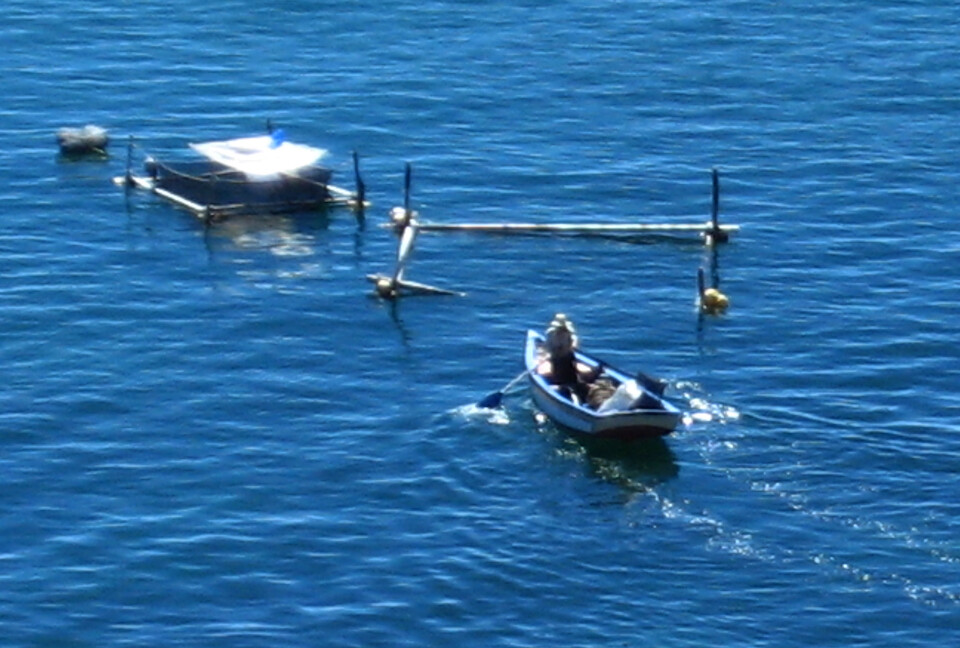
Fisherman heading out to his nets.
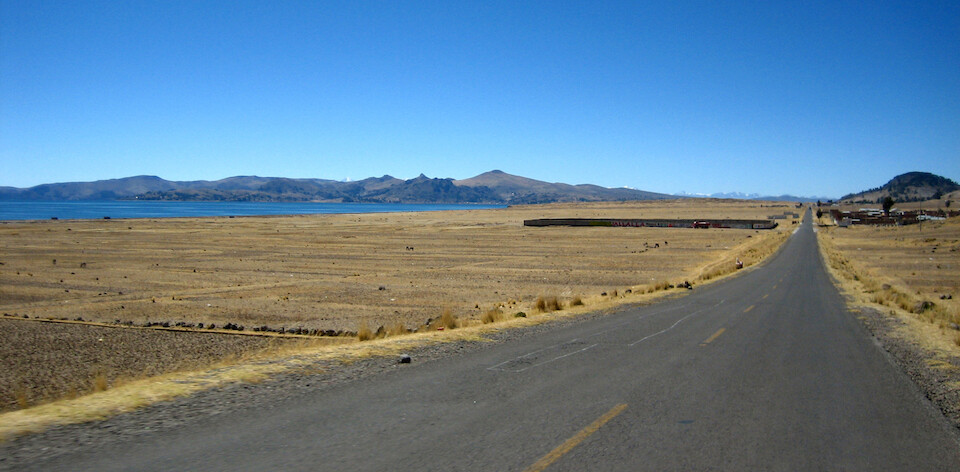
At the end of Peru, nearing the border with Bolivia.
I knew I would enjoy Peru and its diverse landscape dominated by massive snow peaks. The awe of the Andes really sets in after traversing this grand land. The unexpected encounters along the way also made this a special experience.
Next: Bolivia, Part 1: Copacabana, La Paz and Death Road
Previous: Peru, Part 5: Machu Picchu